
The typical U.S. household earned $53,889 in 2015, roughly $2,500 more than in 2009, when the typical household earned $51,425. While American incomes have risen substantially since the depths of the Great Recession, the economic recovery has been fairly uneven, and income inequality remains high throughout the country.
To determine the richest and poorest towns in America, 24/7 Wall St. reviewed household income data from the U.S. Census Bureau’s latest American Community Survey.
Scarsdale, New York is the richest town in the nation, with a median household income of $242,782. The typical household in Scarsdale earns roughly 15 times the income of the typical household in Centreville, Illinois, America’s poorest town, where the median income is $16,553.
Click here to see America’s richest towns.
Click here to see America’s poorest towns.
Many of the wealthiest towns are suburbs of America’s largest cities, where many of the residents commute to high-paying jobs in the nearby metropolis. Scarsdale, New York, for example, is about a 30-minute ride along the Metro-North Railroad to Grand Central Station. Great Falls, Virginia, the nation’s second wealthiest town, is approximately 40 minutes by car to Washington, D.C., and Winnetka, Illinois, the nation’s fourth wealthiest town, is a suburb 45 minutes outside of Chicago.
In 21 of the 25 small wealthiest towns, more than 80% of the workers commute outside of their place of residence for work.
One of the largest determinants of area wealth is educational attainment. Compared to American workers without a four-year college education, those with a bachelor’s degree earn approximately $23,000 more a year, and those with a graduate degree earn nearly $40,000 more.
While in 23 of the 25 richest towns more than 70% of adults have a bachelor’s degree, the college attainment rate is less than 15% of adults in 20 of the 25 poorest towns.
Many of the poorest towns have experienced economic declines for decades, as once robust U.S. industries such as manufacturing and coal mining have also been on the decline. While Benton Harbor, Michigan, for example, was once a major manufacturing center with a population of more than 20,000 in the 1960s, today the lakeside city is the poorest town in the state and is home to half the population it had five decades ago.
Many of these poorest towns have experienced white flight as some of the wealthier, majority white residents moved to more affluent suburbs, shrinking the city’s tax base and further weakening the area’s economy.
In East Cleveland, Ohio, the first suburb of the city of Cleveland, the population fell due to outbound migration from 40,000 in 1950 to just 17,500 as of 2015. Today, non-white residents comprise more than 90% of the East Cleveland population. In 16 of the 25 poorest towns, minority groups comprise more than half of the population.
To determine the richest and poorest towns in America, 24/7 Wall St. reviewed household income data from the U.S. Census Bureau’s American Community Survey for the five-year period between 2011 and 2015. We excluded towns for which the margin of error at 90% confidence was greater than 10% of either the median household income or the population. Unincorporated regions called census-designated places were also considered. Poverty rates, median home values, and the percentage of adults with at least a bachelor’s degree also came from the ACS and are also five year estimates through 2015.
These are America’s richest and poorest towns.
Richest towns:
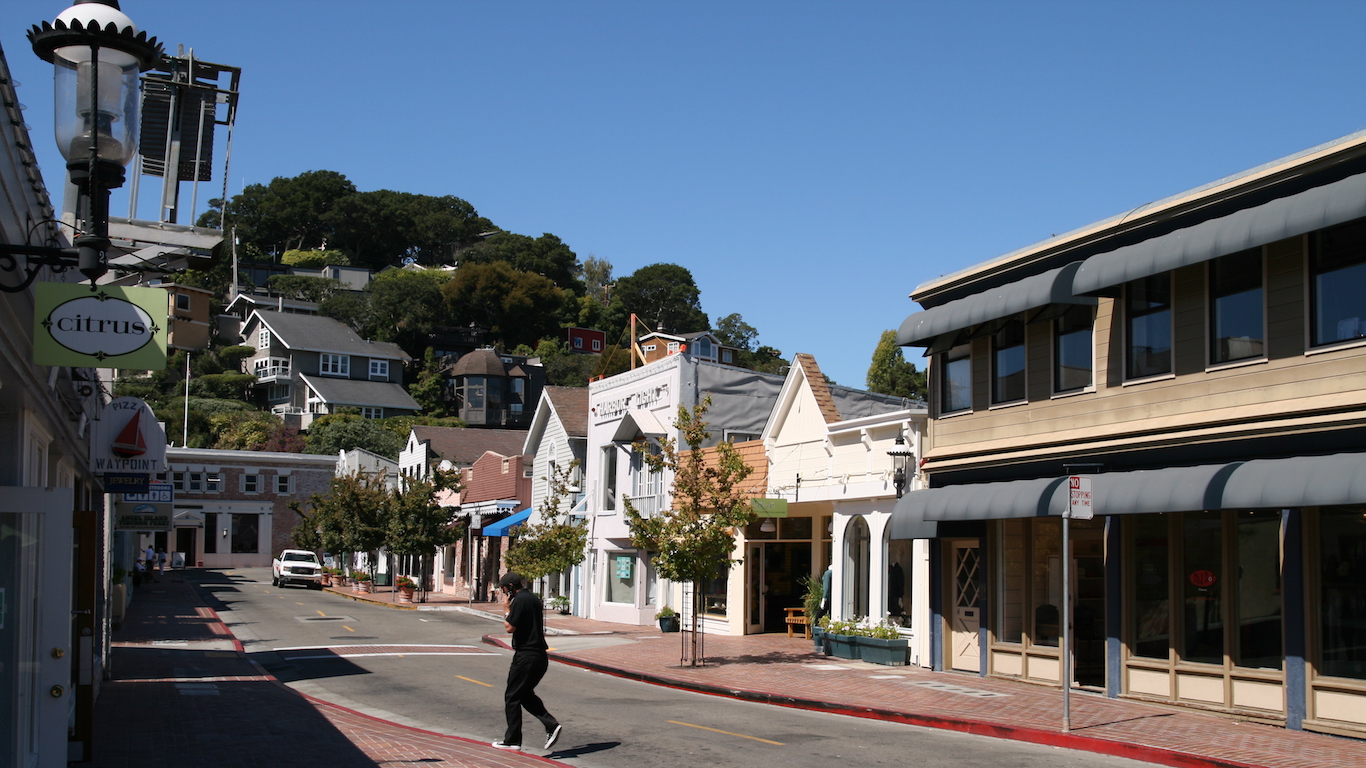
25. Belvedere, California
> Median household income: $169,659
> Median home value: $2,000,000+
> Adults with at least a bachelor’s degree: 81.2%
> Poverty rate: 3.5%
[in-text-ad]
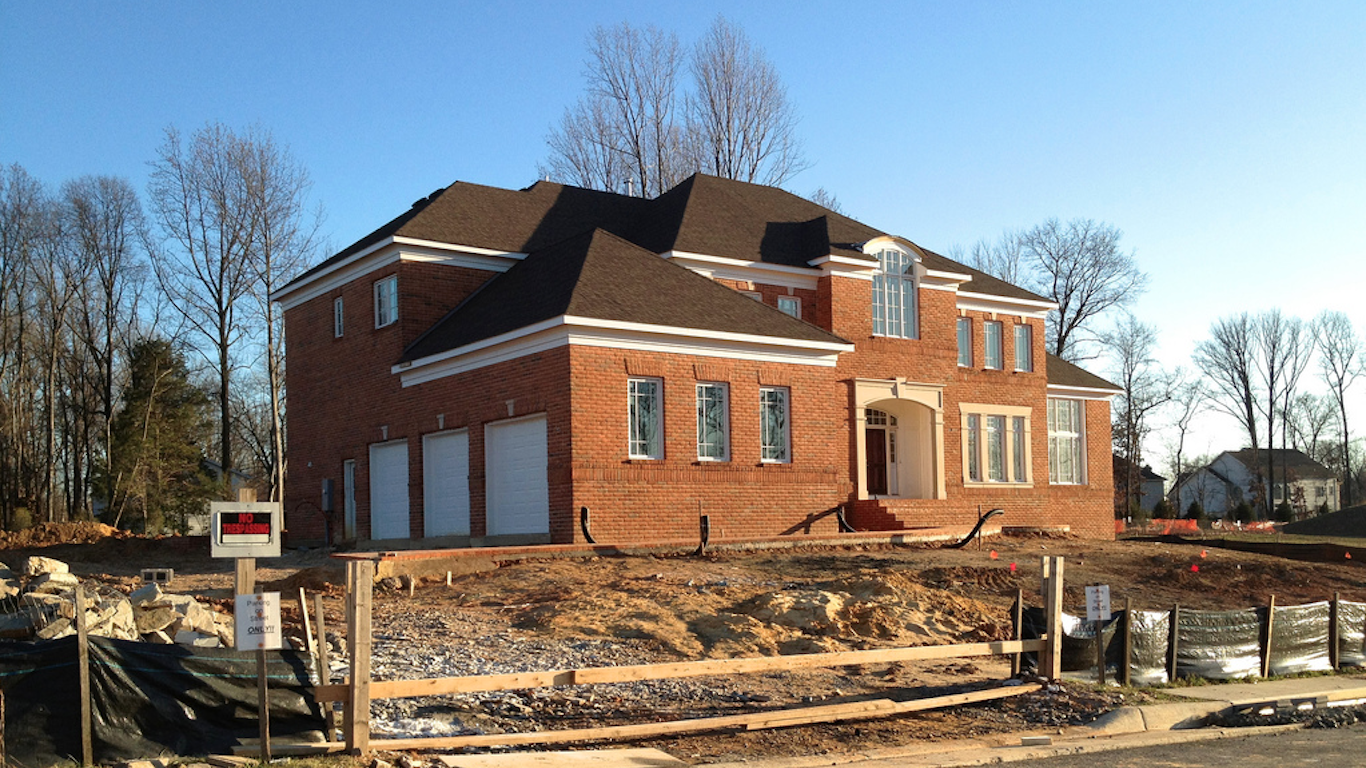
24. Dranesville, Virginia
> Median household income: $170,077
> Median home value: $539,400
> Adults with at least a bachelor’s degree: 71.3%
> Poverty rate: 4.0%

23. Lake Success, New York
> Median household income: $173,533
> Median home value: $1,181,800
> Adults with at least a bachelor’s degree: 62.8%
> Poverty rate: 5.7%

22. Spring Valley Village, Texas
> Median household income: $175,375
> Median home value: $609,600
> Adults with at least a bachelor’s degree: 80.1%
> Poverty rate: 2.4%
[in-text-ad-2]
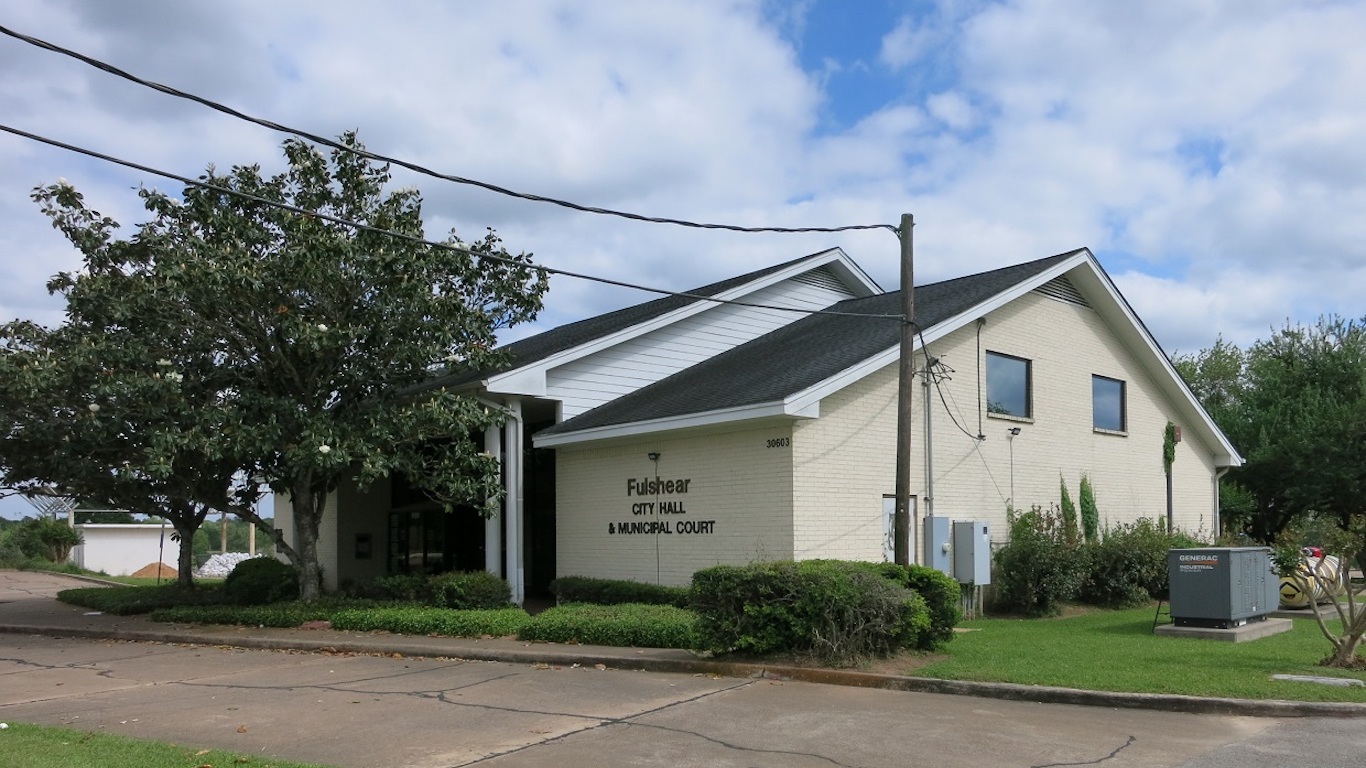
21. Fulshear, Texas
> Median household income: $175,990
> Median home value: $404,200
> Adults with at least a bachelor’s degree: 58.7%
> Poverty rate: 3.2%

20. Glencoe, Illinois
> Median household income: $180,208
> Median home value: $879,500
> Adults with at least a bachelor’s degree: 86.5%
> Poverty rate: 3.7%
[in-text-ad]
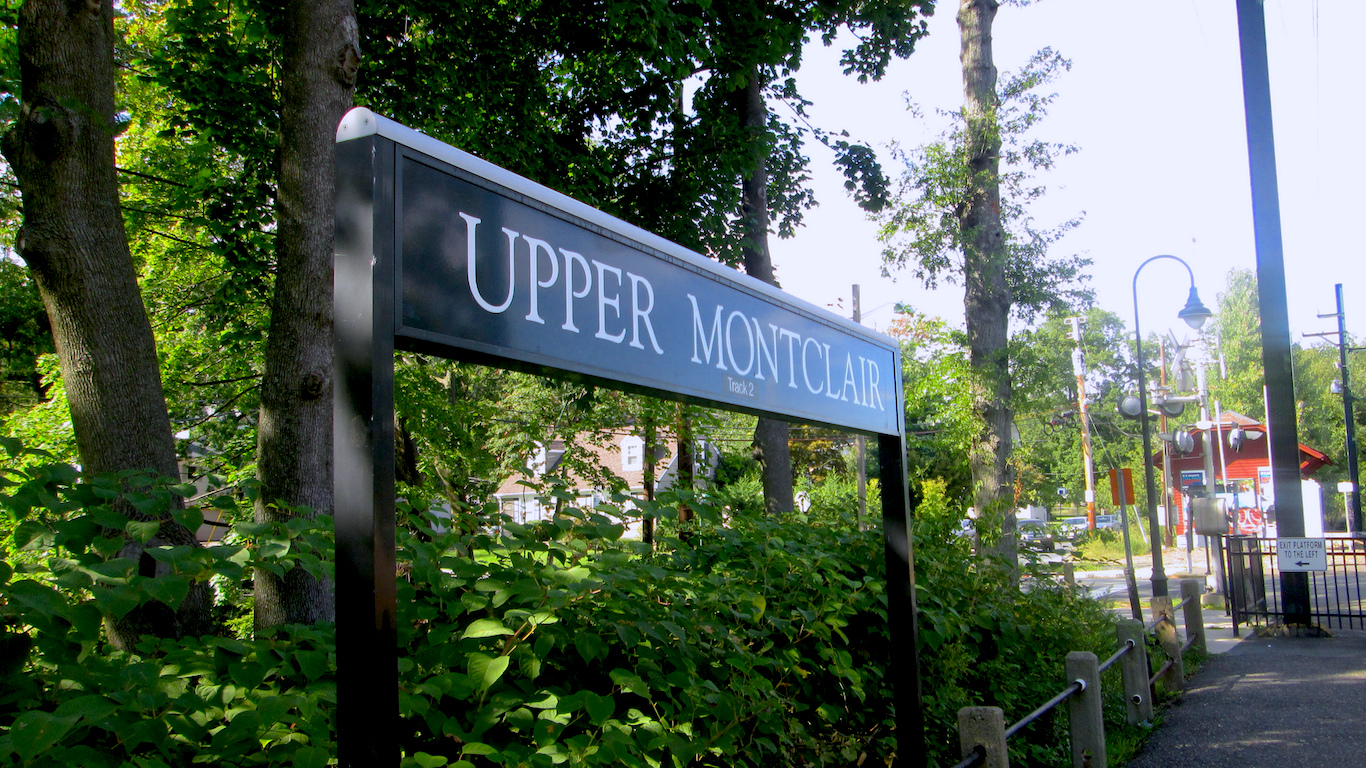
19. Upper Montclair, New Jersey
> Median household income: $180,479
> Median home value: $680,000
> Adults with at least a bachelor’s degree: 84.7%
> Poverty rate: 3.9%
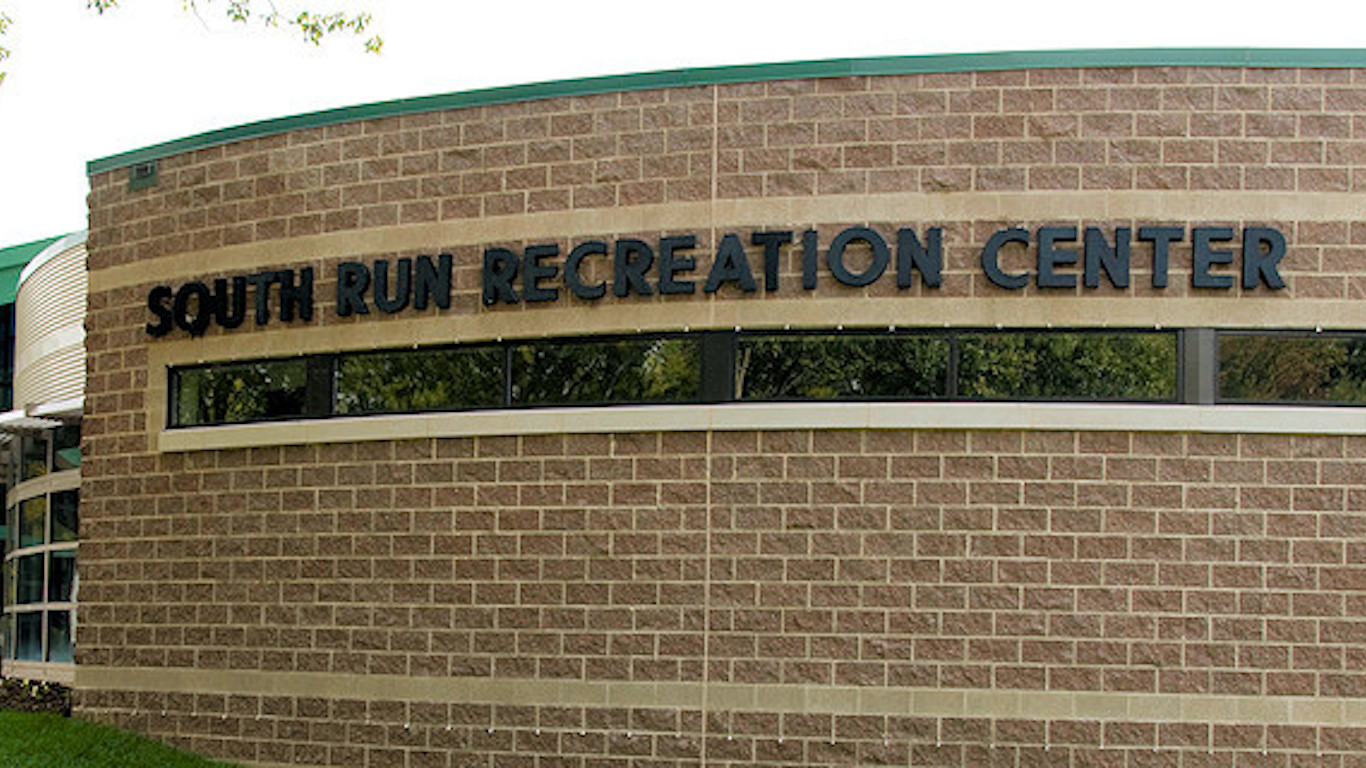
18. South Run, Virginia
> Median household income: $182,212
> Median home value: $736,600
> Adults with at least a bachelor’s degree: 77.4%
> Poverty rate: 3.9%
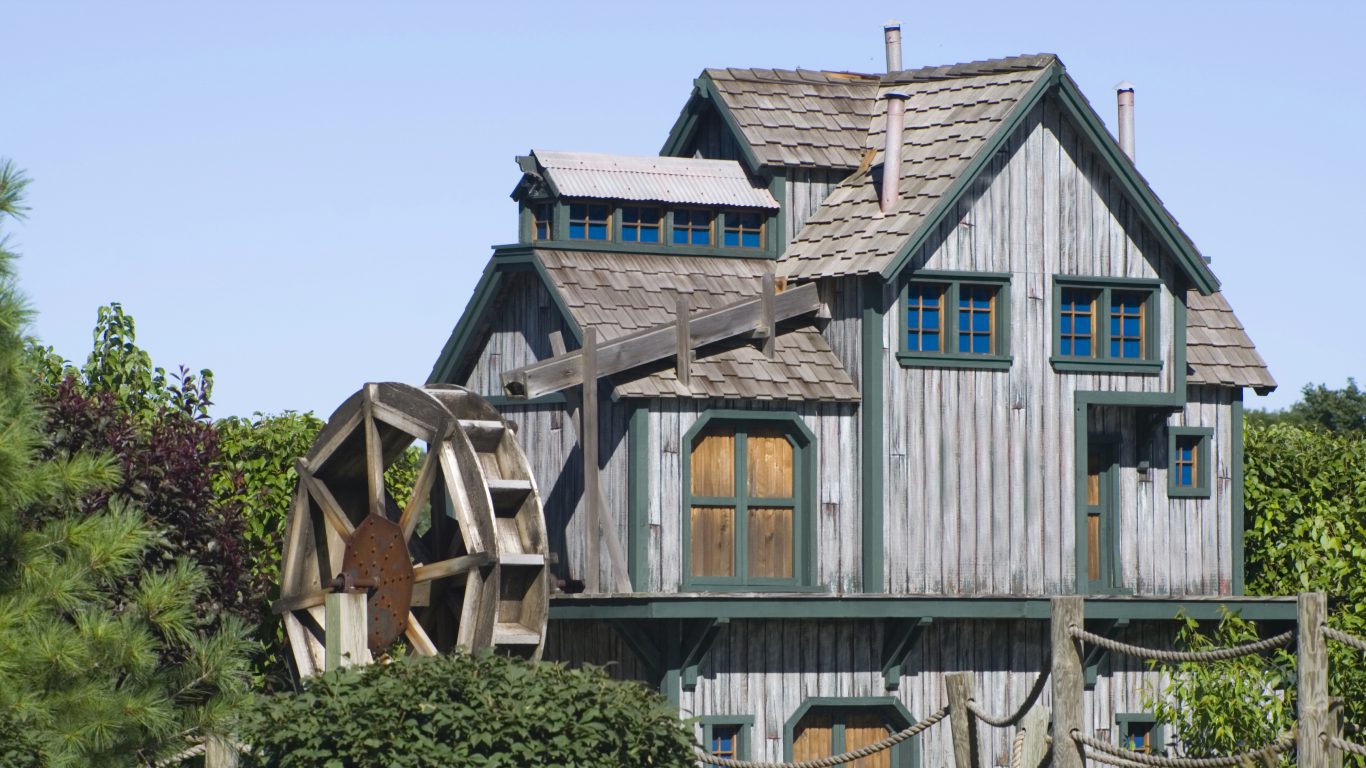
17. Long Grove, Illinois
> Median household income: $188,182
> Median home value: $667,600
> Adults with at least a bachelor’s degree: 71.6%
> Poverty rate: 2.4%
[in-text-ad-2]
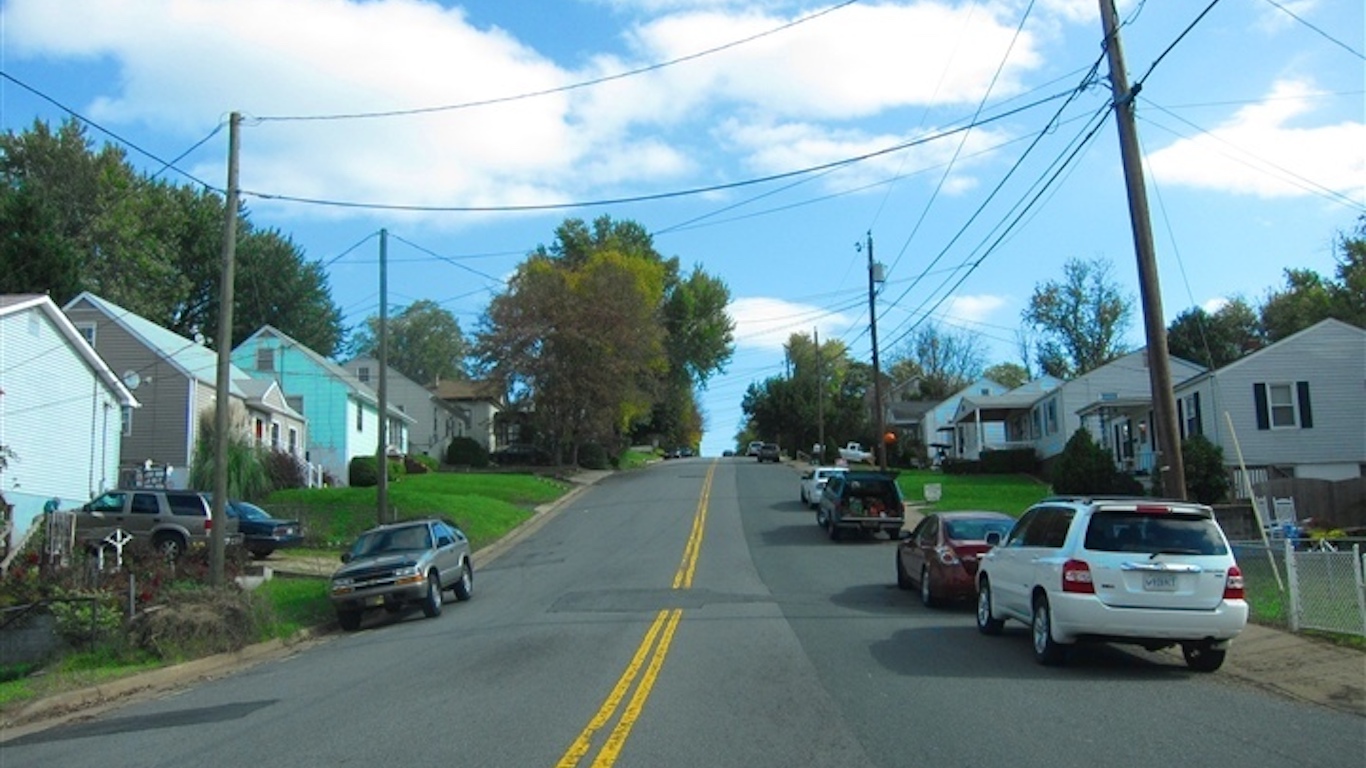
16. Belmont, Virginia
> Median household income: $192,396
> Median home value: $685,400
> Adults with at least a bachelor’s degree: 71.9%
> Poverty rate: 2.4%

15. New Albany, Ohio
> Median household income: $196,030
> Median home value: $485,100
> Adults with at least a bachelor’s degree: 76.5%
> Poverty rate: 2.6%
[in-text-ad]
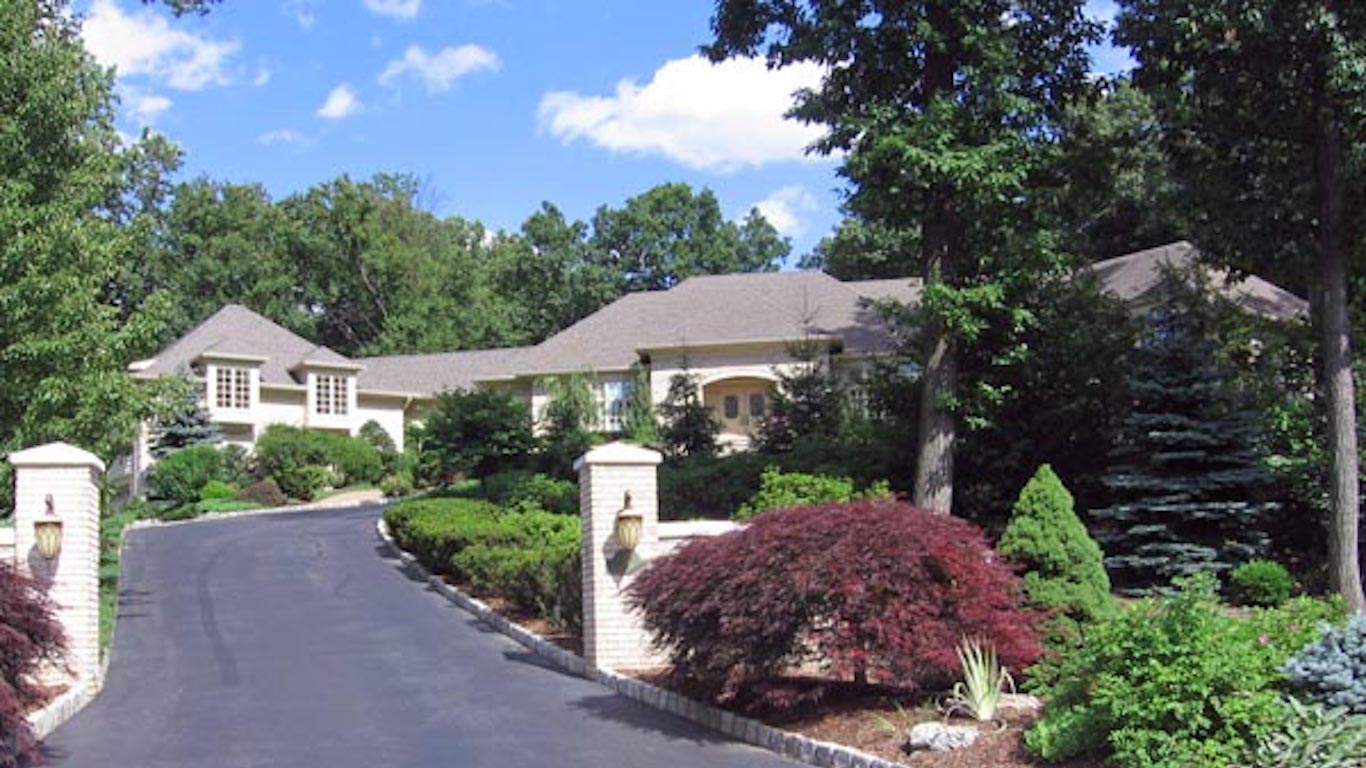
14. North Caldwell, New Jersey
> Median household income: $200,152
> Median home value: $716,300
> Adults with at least a bachelor’s degree: 70.5%
> Poverty rate: 2.3%

13. Loyola, California
> Median household income: $200,208
> Median home value: $1,961,700
> Adults with at least a bachelor’s degree: 84.0%
> Poverty rate: 1.6%
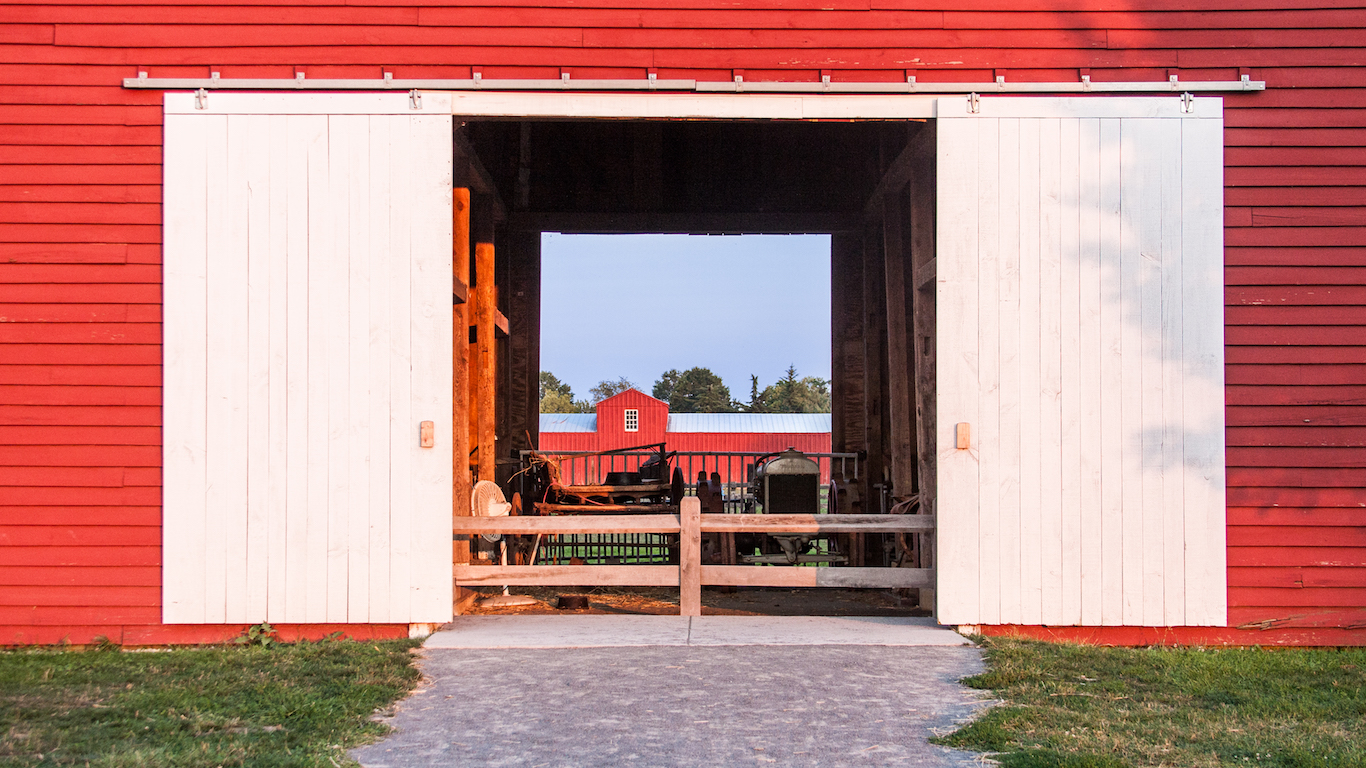
12. Floris, Virginia
> Median household income: $204,073
> Median home value: $624,400
> Adults with at least a bachelor’s degree: 78.5%
> Poverty rate: 3.4%
[in-text-ad-2]
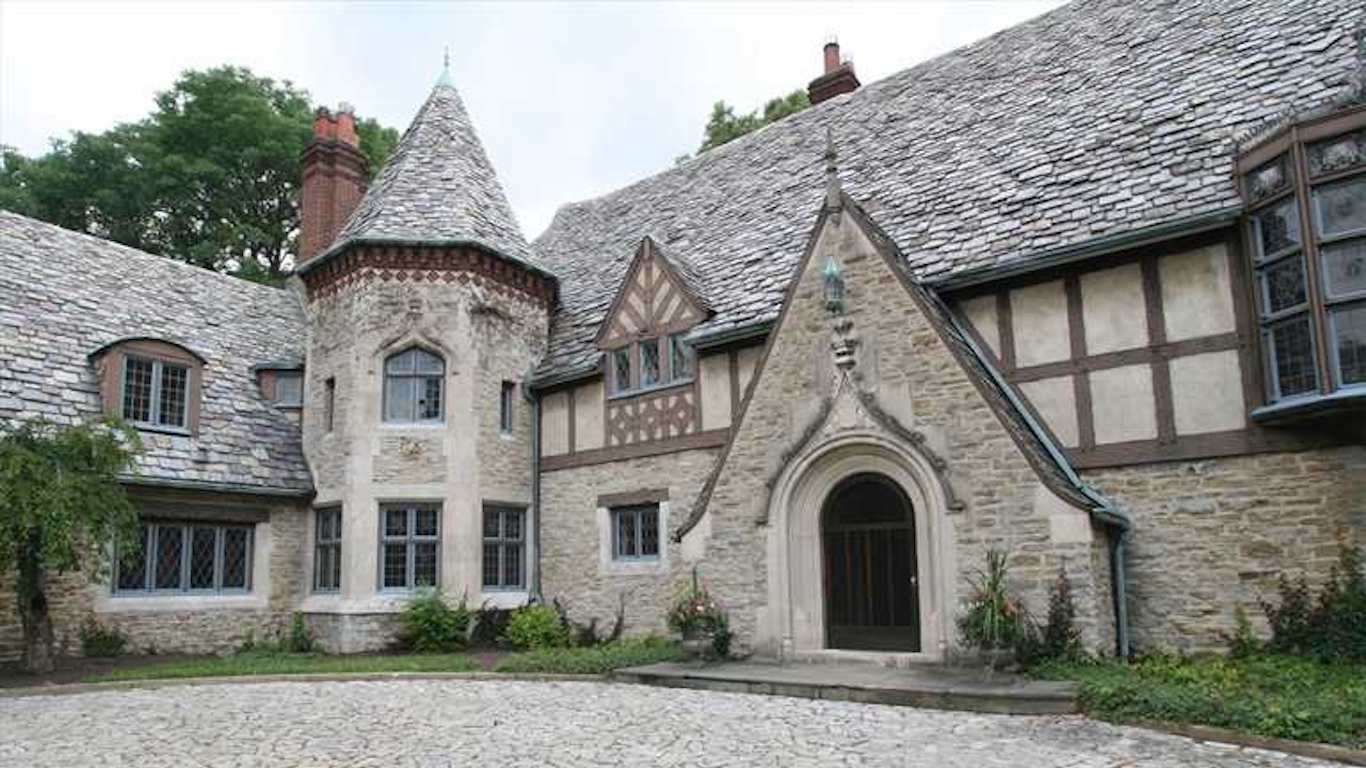
11. The Village of Indian Hill, Ohio
> Median household income: $206,250
> Median home value: $925,600
> Adults with at least a bachelor’s degree: 89.4%
> Poverty rate: 1.2%
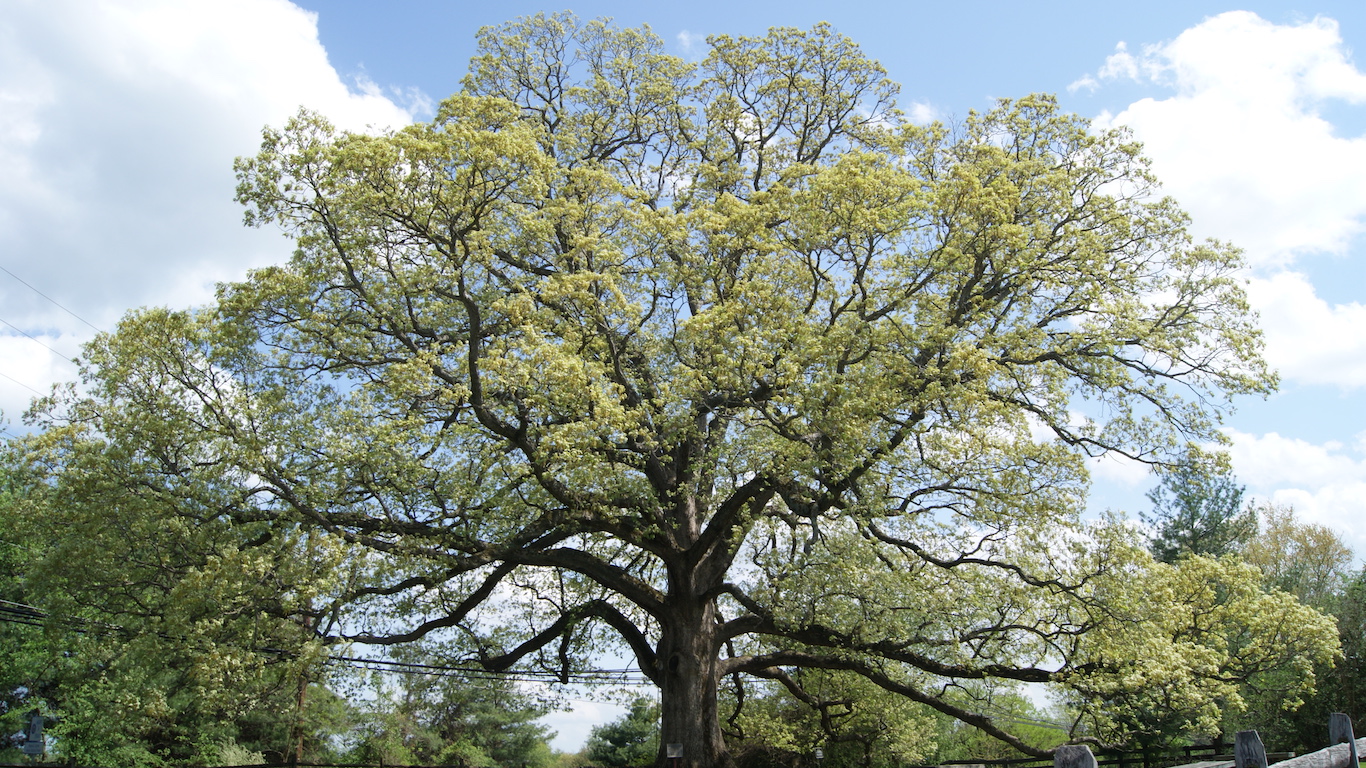
10. Travilah, Maryland
> Median household income: $206,827
> Median home value: $1,053,700
> Adults with at least a bachelor’s degree: 76.9%
> Poverty rate: 3.9%
[in-text-ad]

9. Laurel Hollow, New York
> Median household income: $207,500
> Median home value: $1,434,500
> Adults with at least a bachelor’s degree: 73.9%
> Poverty rate: 8.2%
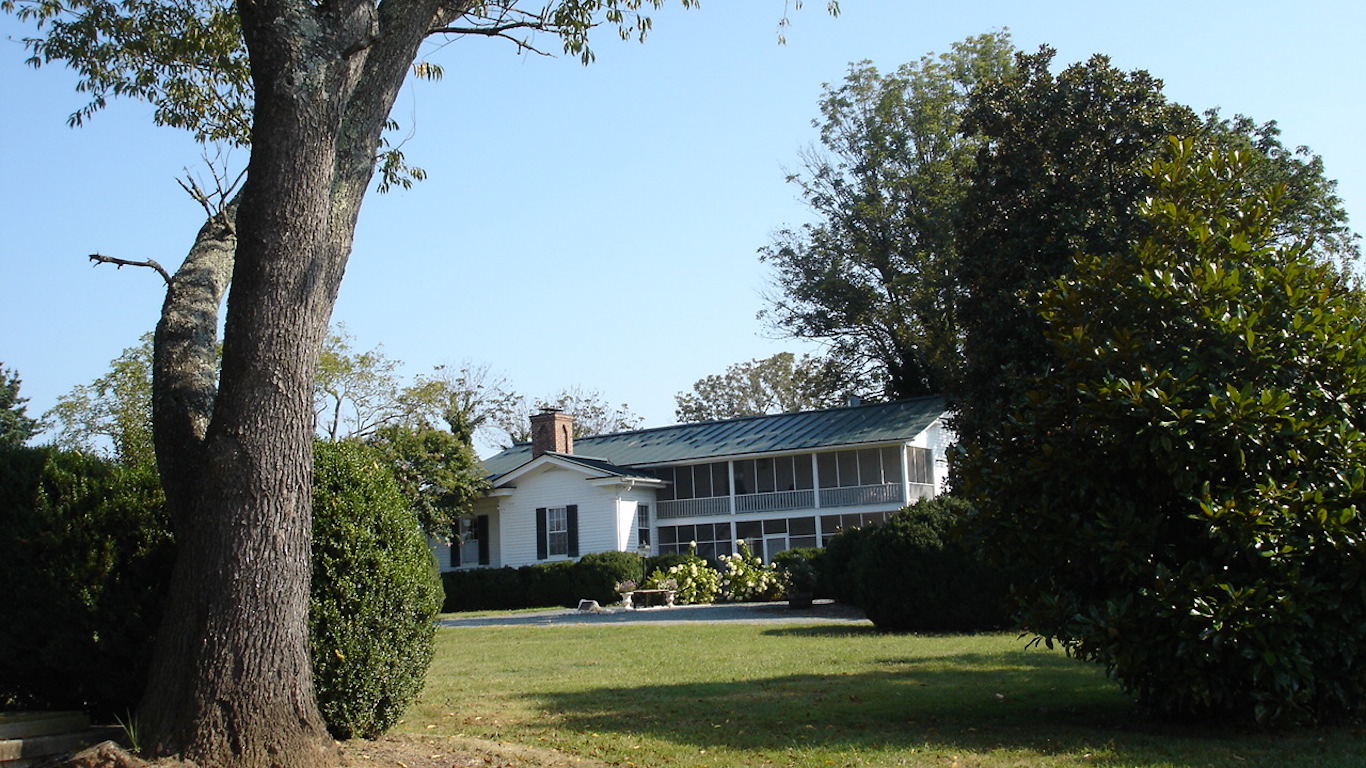
8. Wolf Trap, Virginia
> Median household income: $208,546
> Median home value: $856,900
> Adults with at least a bachelor’s degree: 82.3%
> Poverty rate: 1.6%
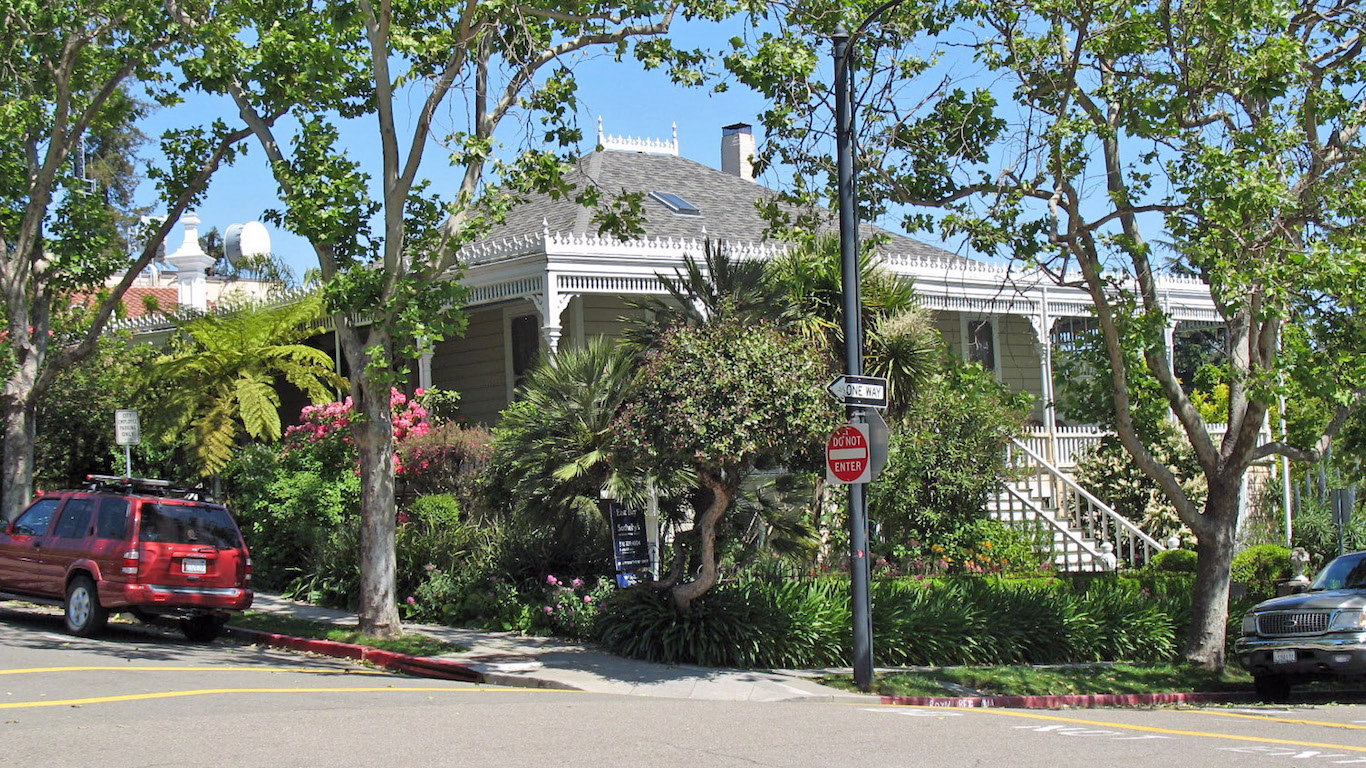
7. Piedmont, California
> Median household income: $208,772
> Median home value: $1,456,300
> Adults with at least a bachelor’s degree: 85.3%
> Poverty rate: 5.2%
[in-text-ad-2]
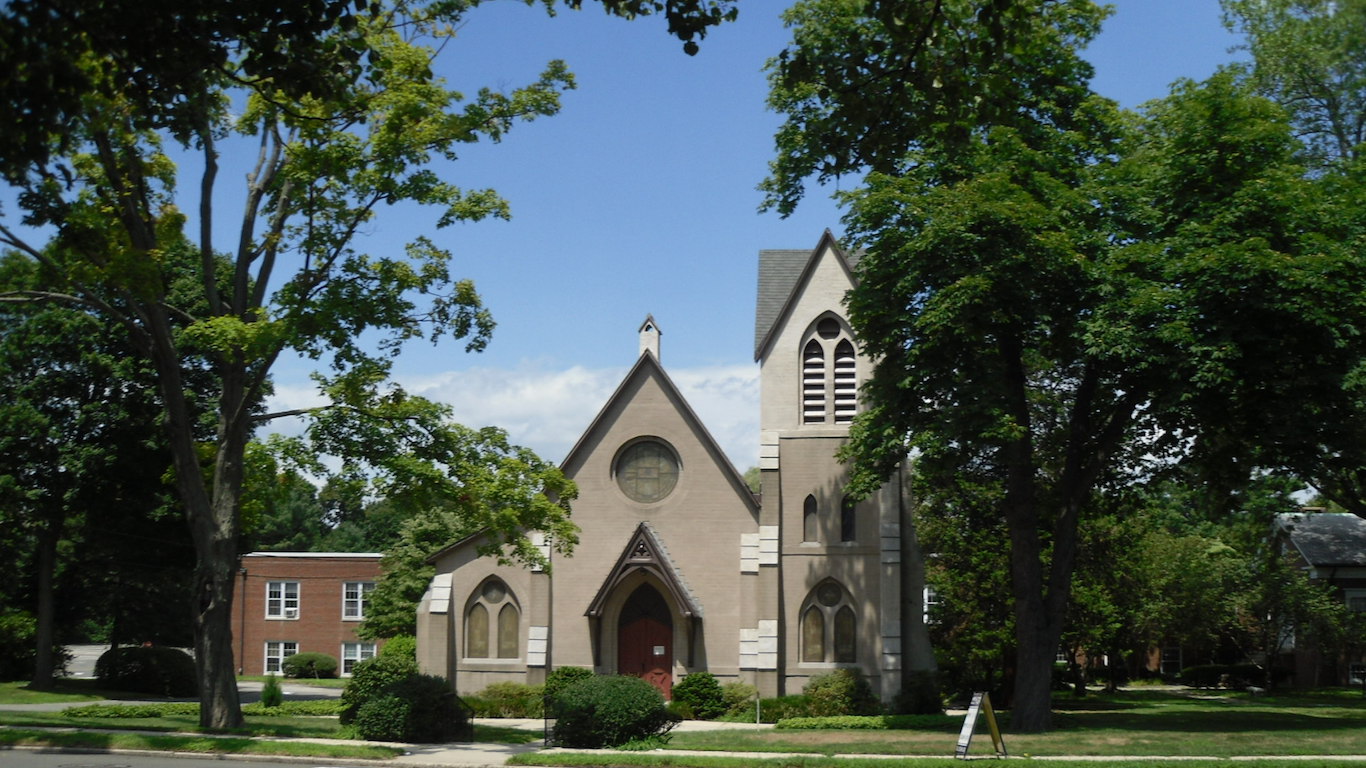
6. Darien, Connecticut
> Median household income: $208,906
> Median home value: $1,279,900
> Adults with at least a bachelor’s degree: 80.1%
> Poverty rate: 5.4%
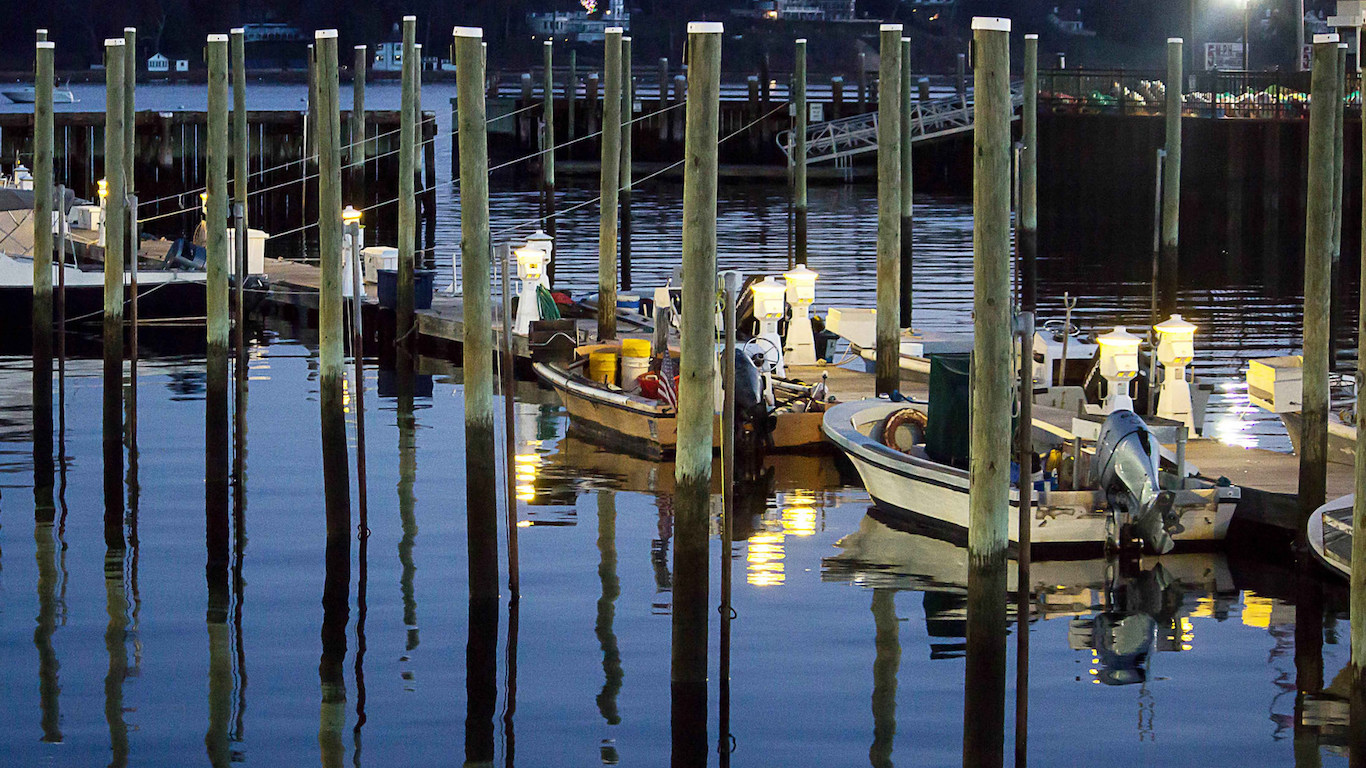
5. Oyster Bay Cove, New York
> Median household income: $210,288
> Median home value: $1,506,300
> Adults with at least a bachelor’s degree: 72.4%
> Poverty rate: 0.5%
[in-text-ad]
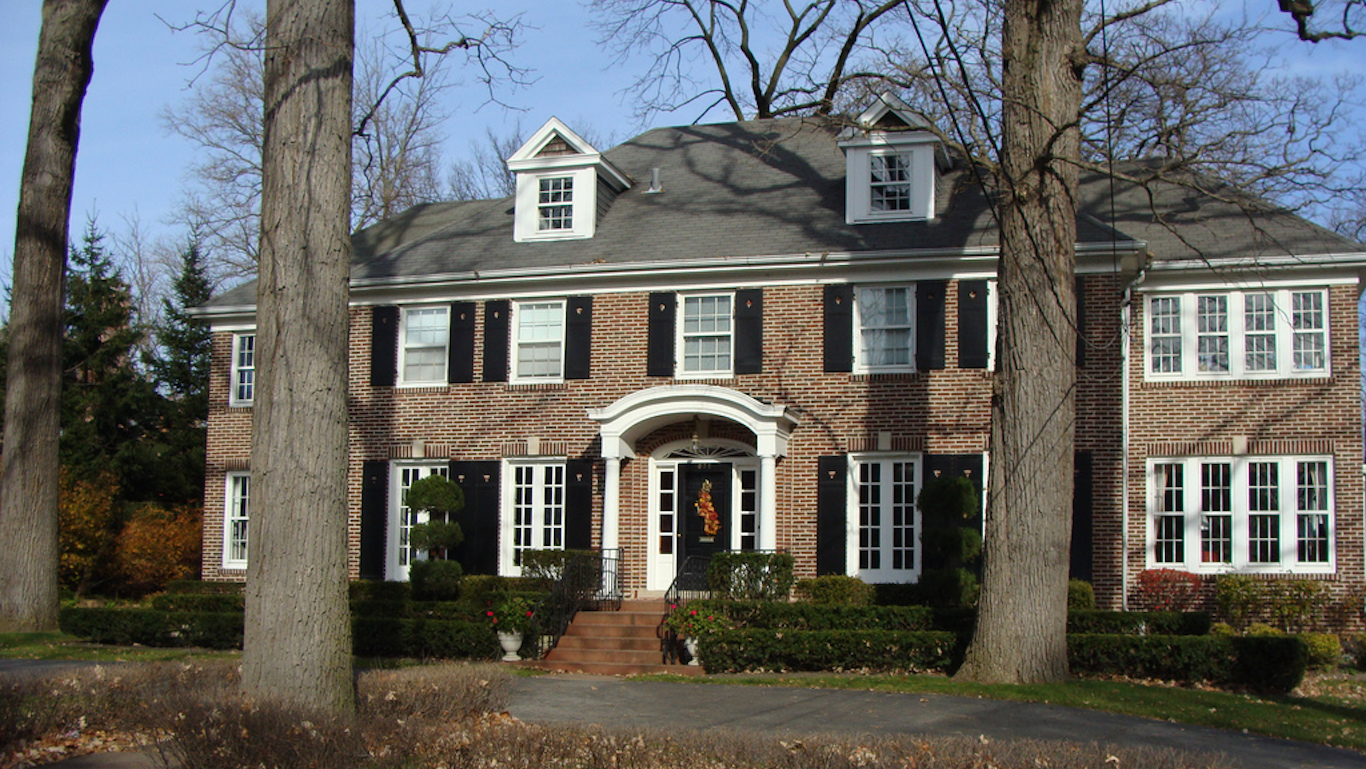
4. Winnetka, Illinois
> Median household income: $211,773
> Median home value: $957,600
> Adults with at least a bachelor’s degree: 87.9%
> Poverty rate: 1.8%

3. Rolling Hills, California
> Median household income: $216,458
> Median home value: $2,000,000+
> Adults with at least a bachelor’s degree: 70.3%
> Poverty rate: 2.0%

2. Great Falls, Virginia
> Median household income: $234,091
> Median home value: $1,103,000
> Adults with at least a bachelor’s degree: 81.1%
> Poverty rate: 1.9%
[in-text-ad-2]

1. Scarsdale, New York
> Median household income: $242,782
> Median home value: $1,230,600
> Adults with at least a bachelor’s degree: 87.0%
> Poverty rate: 2.3%
Poorest towns:

25. Uniontown, Pennsylvania
> Median household income: $26,047
> Median home value: $76,900
> Adults with at least a bachelor’s degree: 14.3%
> Poverty rate: 29.4%
[in-text-ad]

24. Mendota, California
> Median household income: $25,862
> Median home value: $108,100
> Adults with at least a bachelor’s degree: 1.5%
> Poverty rate: 46.5%
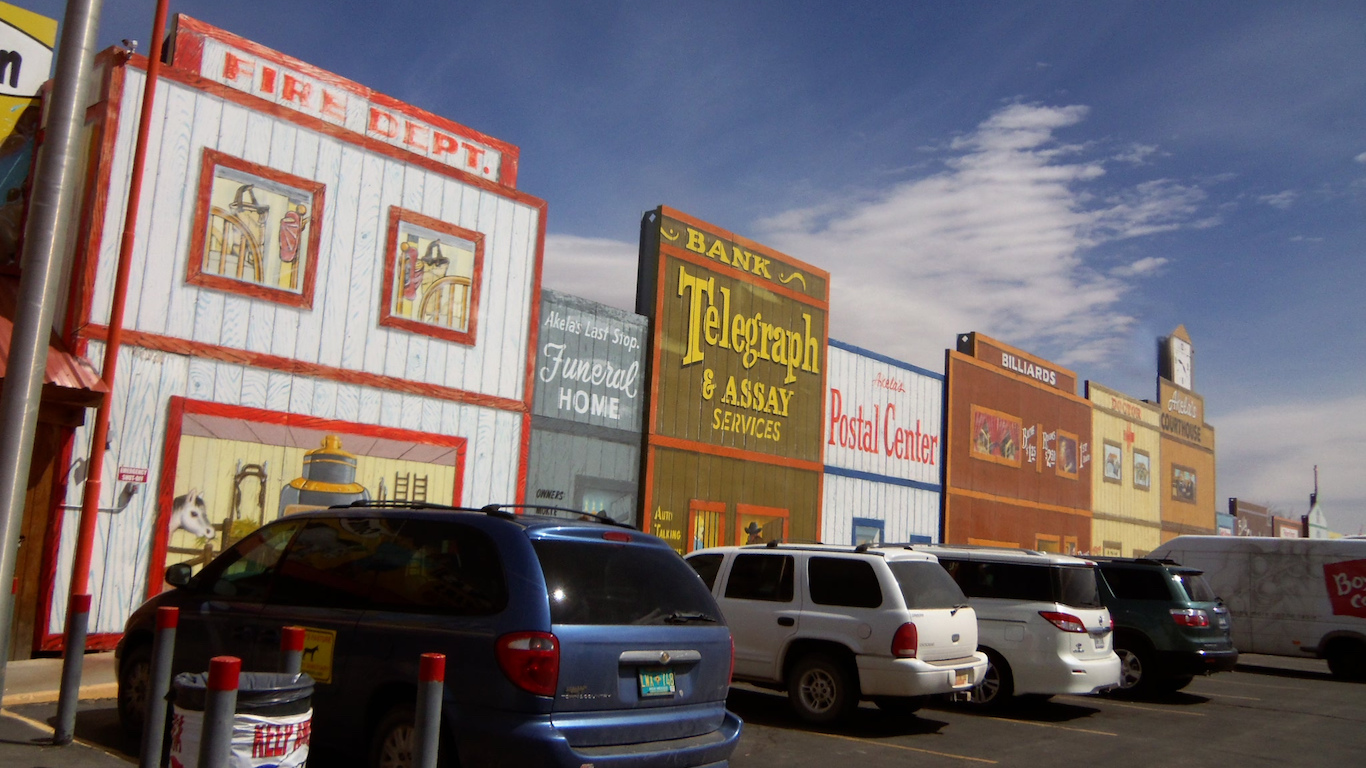
23. Deming, New Mexico
> Median household income: $25,844
> Median home value: $83,200
> Adults with at least a bachelor’s degree: 11.2%
> Poverty rate: 33.1%

22. Florida City, Florida
> Median household income: $25,840
> Median home value: $98,400
> Adults with at least a bachelor’s degree: 4.7%
> Poverty rate: 48.7%
[in-text-ad-2]
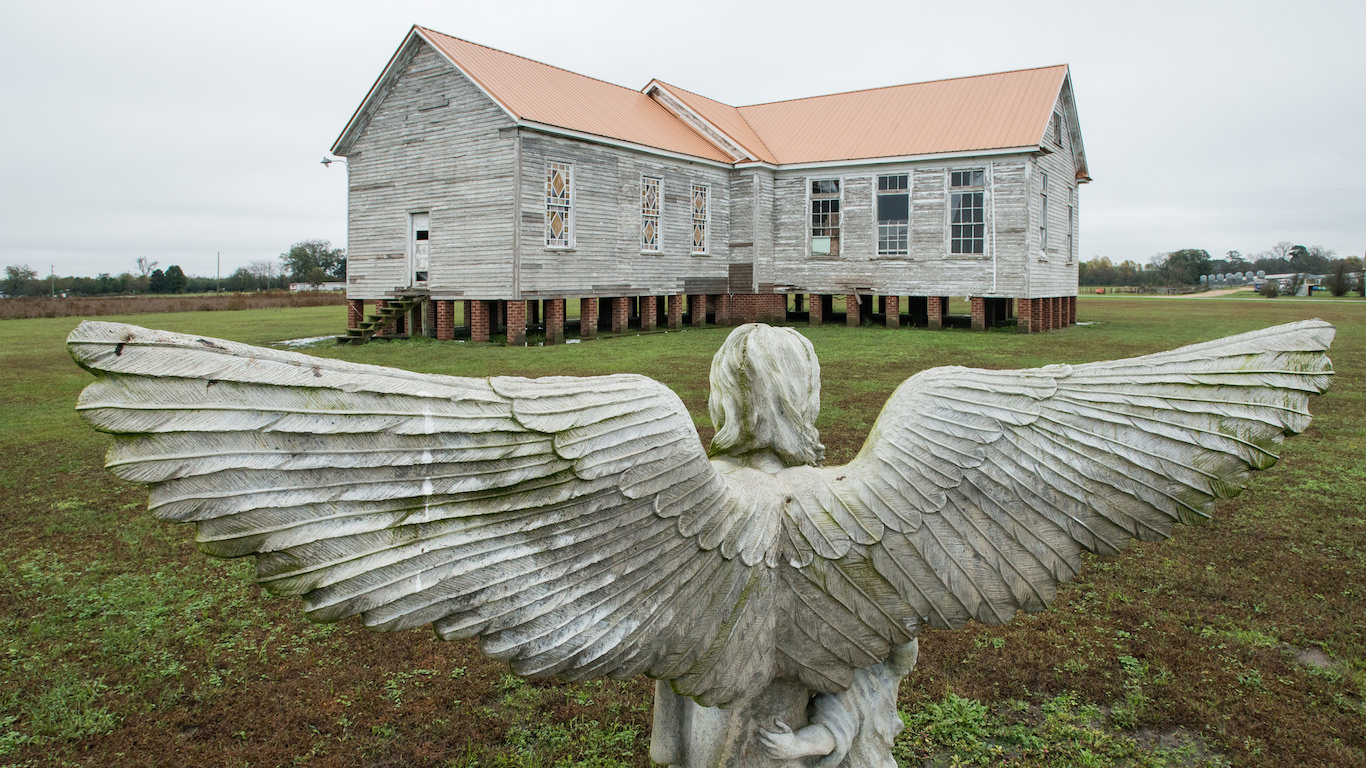
21. Mount Olive, North Carolina
> Median household income: $25,838
> Median home value: $80,800
> Adults with at least a bachelor’s degree: 14.0%
> Poverty rate: 31.5%

20. McKeesport, Pennsylvania
> Median household income: $25,697
> Median home value: $47,100
> Adults with at least a bachelor’s degree: 12.6%
> Poverty rate: 34.0%
[in-text-ad]
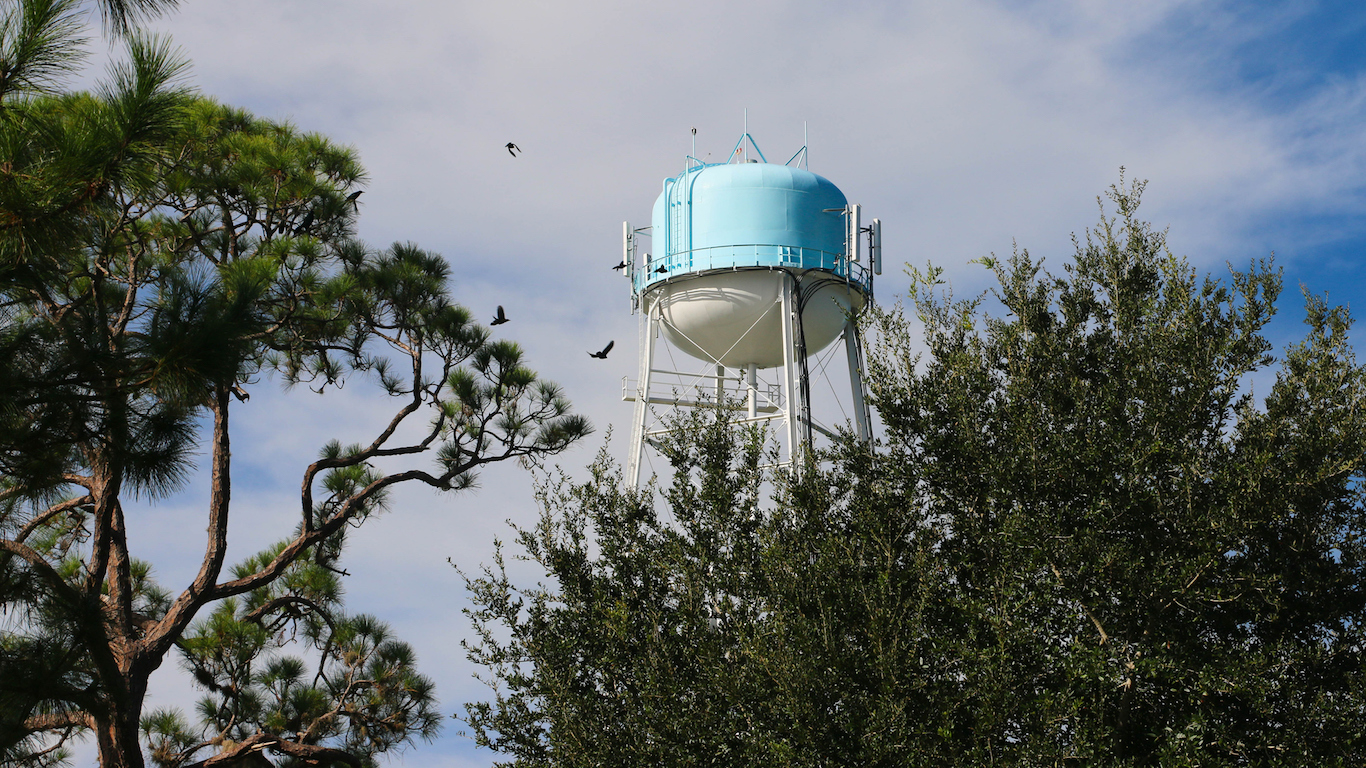
19. Sebring, Florida
> Median household income: $25,663
> Median home value: $82,400
> Adults with at least a bachelor’s degree: 15.2%
> Poverty rate: 30.2%
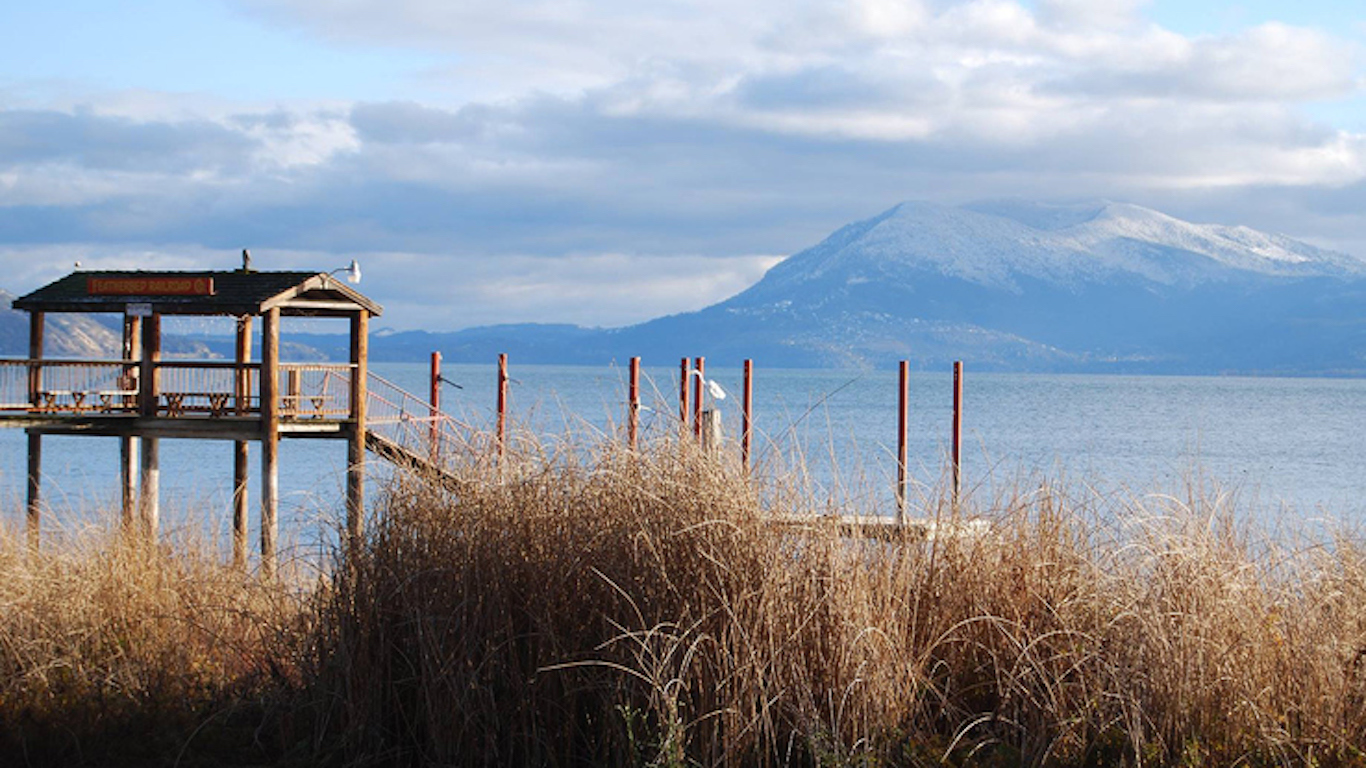
18. Clearlake, California
> Median household income: $25,404
> Median home value: $85,100
> Adults with at least a bachelor’s degree: 8.5%
> Poverty rate: 37.5%

17. Camden, Arkansas
> Median household income: $25,256
> Median home value: $72,900
> Adults with at least a bachelor’s degree: 16.3%
> Poverty rate: 31.4%
[in-text-ad-2]
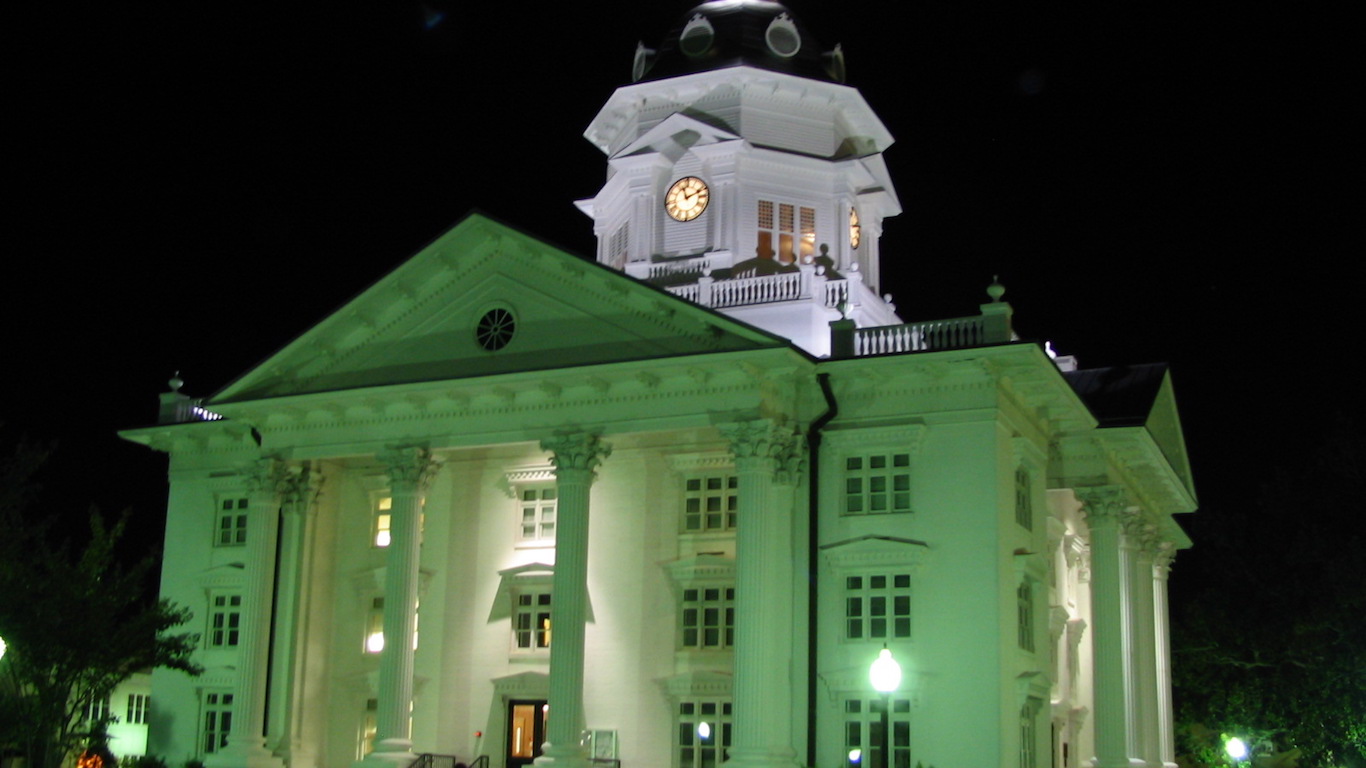
16. Moultrie, Georgia
> Median household income: $25,181
> Median home value: $83,200
> Adults with at least a bachelor’s degree: 12.1%
> Poverty rate: 36.0%
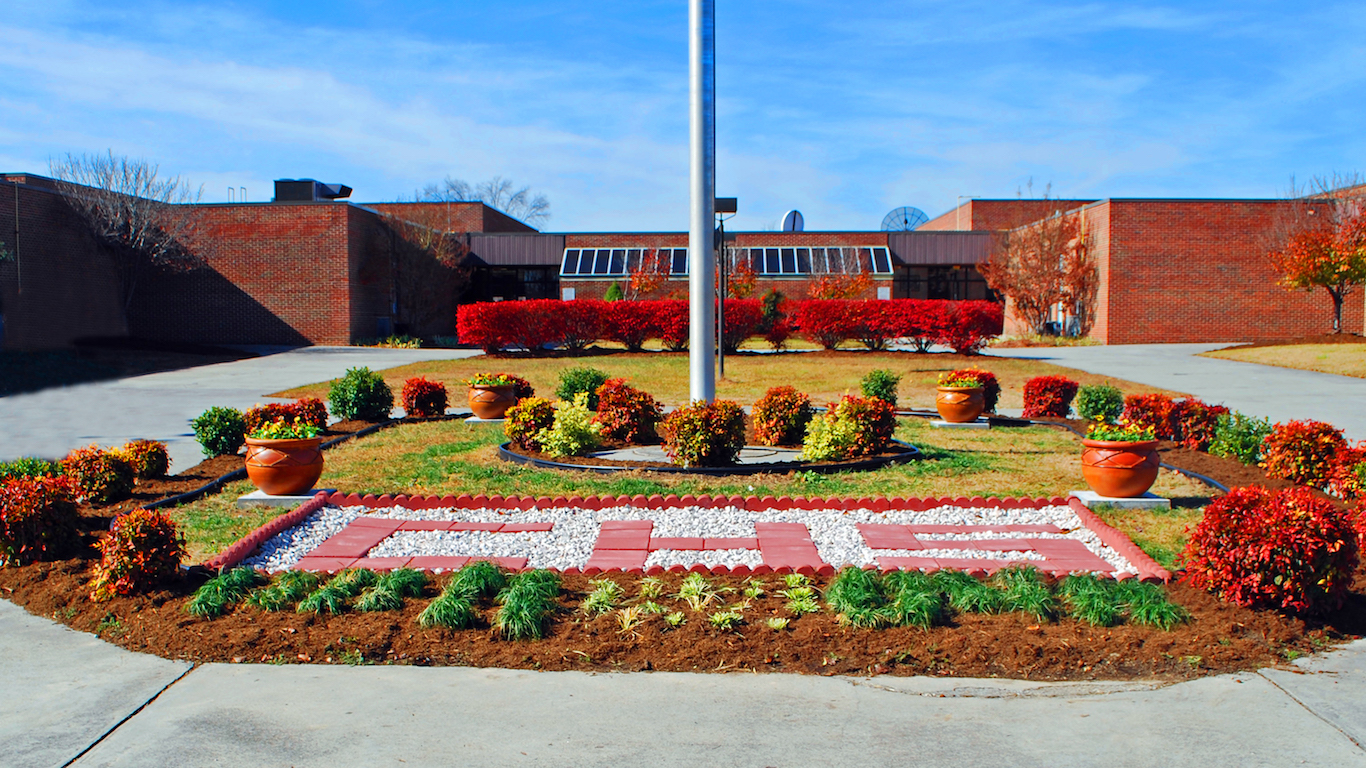
15. Rogersville, Tennessee
> Median household income: $25,095
> Median home value: $110,400
> Adults with at least a bachelor’s degree: 15.0%
> Poverty rate: 26.6%
[in-text-ad]

14. San Joaquin, California
> Median household income: $24,437
> Median home value: $103,100
> Adults with at least a bachelor’s degree: 3.2%
> Poverty rate: 54.2%

13. Johnstown, Pennsylvania
> Median household income: $24,415
> Median home value: $43,100
> Adults with at least a bachelor’s degree: 10.6%
> Poverty rate: 35.1%
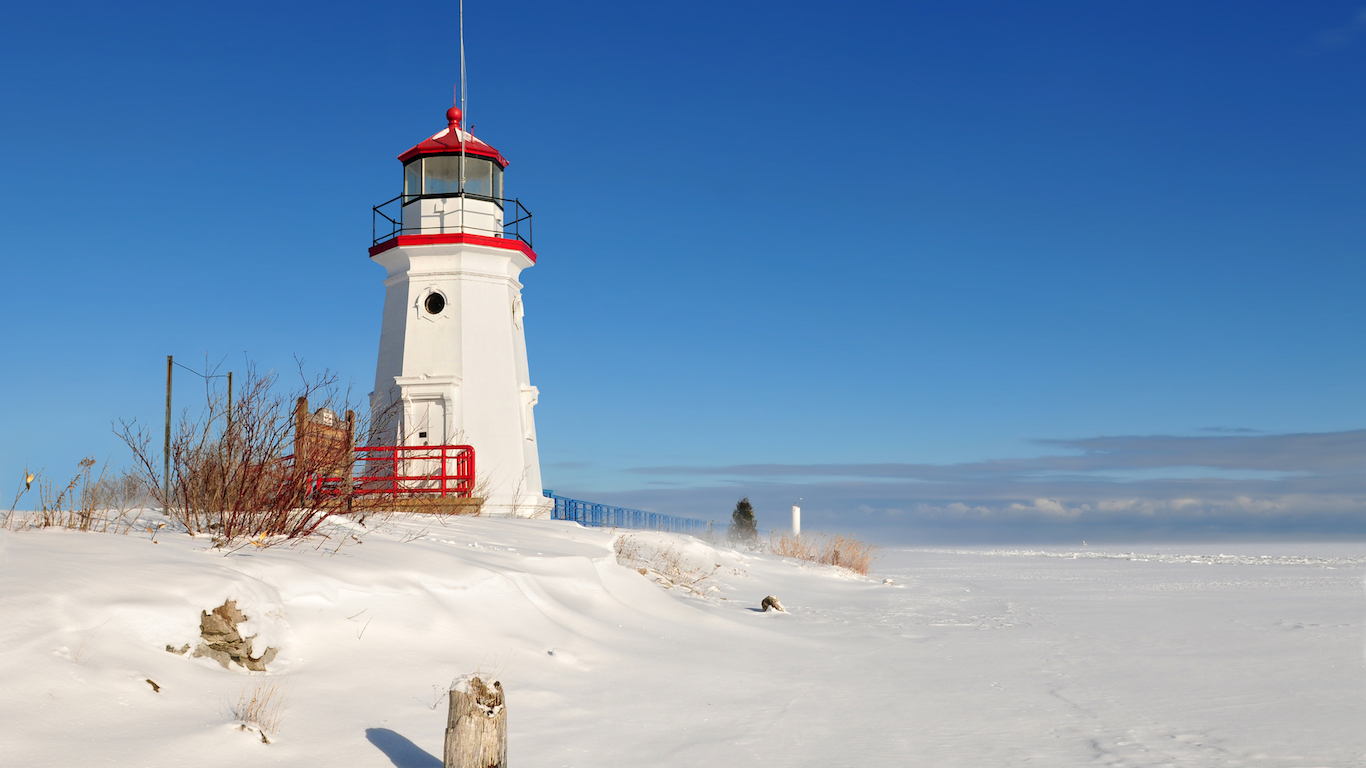
12. Cheboygan, Michigan
> Median household income: $24,389
> Median home value: $73,000
> Adults with at least a bachelor’s degree: 13.4%
> Poverty rate: 33.9%
[in-text-ad-2]
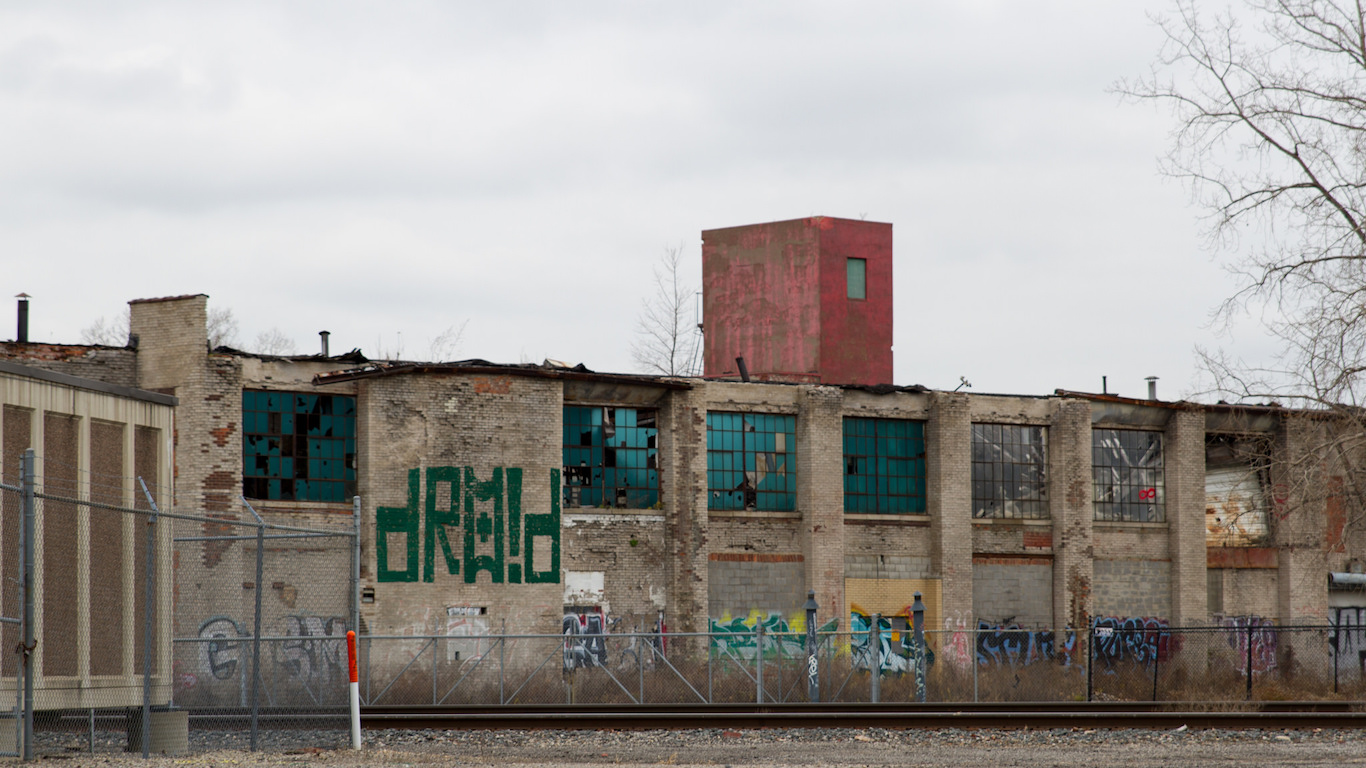
11. Hamtramck, Michigan
> Median household income: $23,759
> Median home value: $41,900
> Adults with at least a bachelor’s degree: 12.9%
> Poverty rate: 47.3%
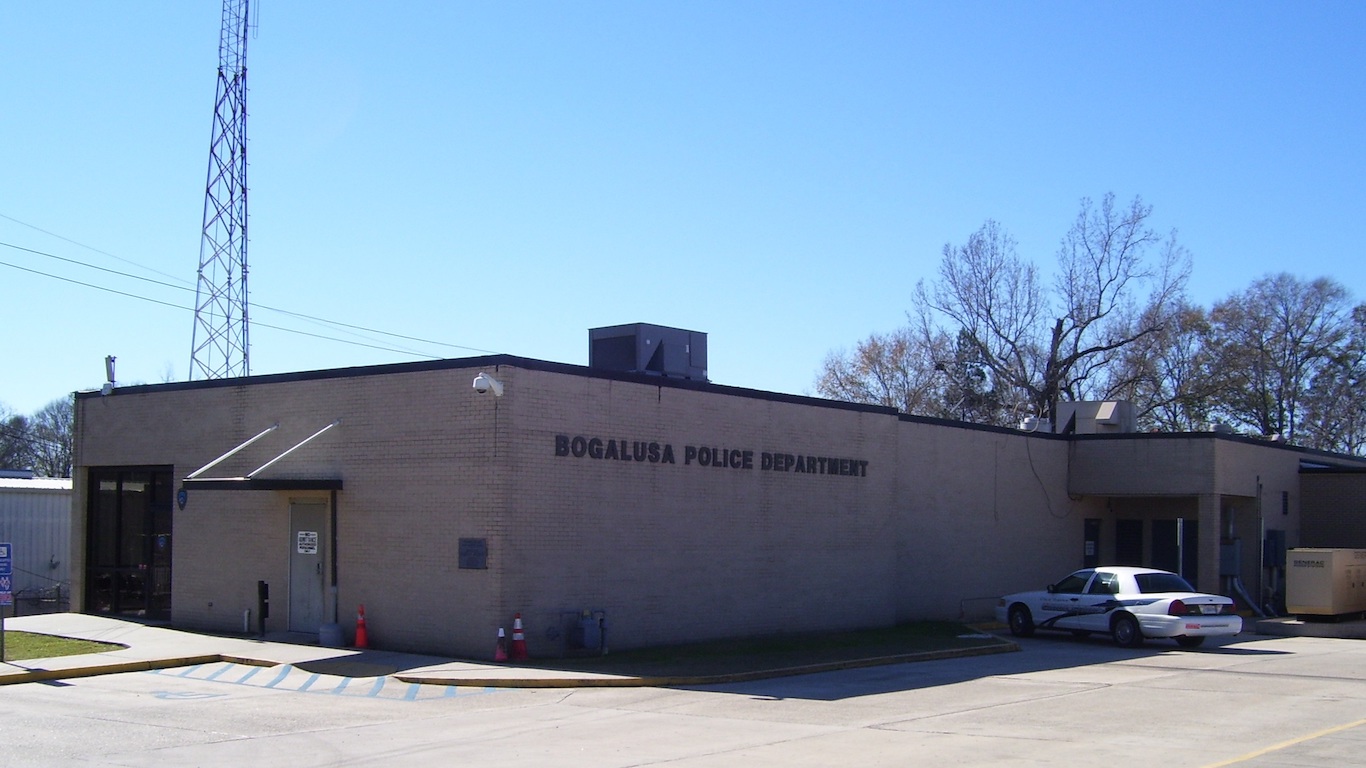
10. Bogalusa, Louisiana
> Median household income: $23,315
> Median home value: $65,900
> Adults with at least a bachelor’s degree: 10.9%
> Poverty rate: 36.8%
[in-text-ad]
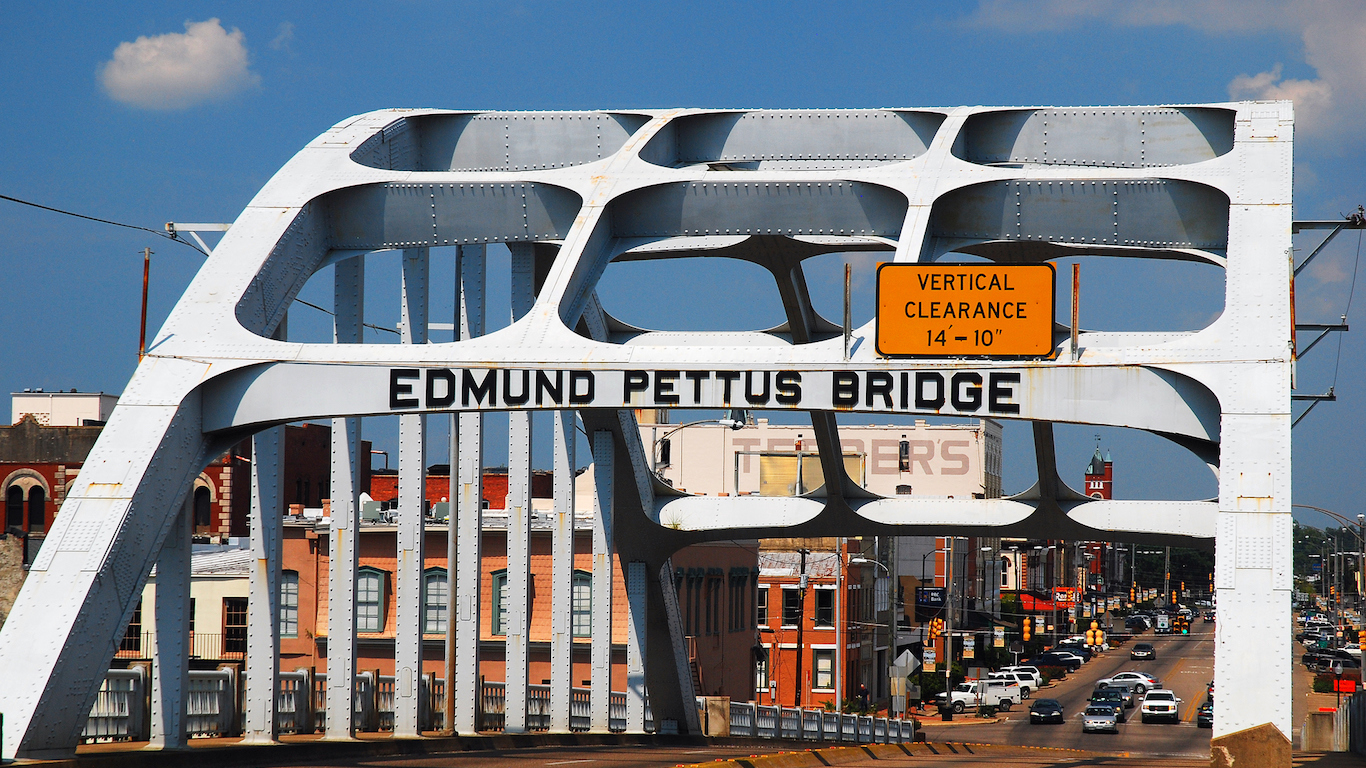
9. Selma, Alabama
> Median household income: $22,414
> Median home value: $87,100
> Adults with at least a bachelor’s degree: 16.7%
> Poverty rate: 41.9%

8. Summerville, Georgia
> Median household income: $21,662
> Median home value: $65,500
> Adults with at least a bachelor’s degree: 8.3%
> Poverty rate: 30.5%

7. Thomson, Georgia
> Median household income: $21,425
> Median home value: $89,400
> Adults with at least a bachelor’s degree: 10.6%
> Poverty rate: 40.1%
[in-text-ad-2]

6. Opelousas, Louisiana
> Median household income: $20,434
> Median home value: $88,300
> Adults with at least a bachelor’s degree: 10.2%
> Poverty rate: 41.9%

5. Lac du Flambeau, Wisconsin
> Median household income: $20,160
> Median home value: $112,900
> Adults with at least a bachelor’s degree: 17.0%
> Poverty rate: 44.3%
[in-text-ad]
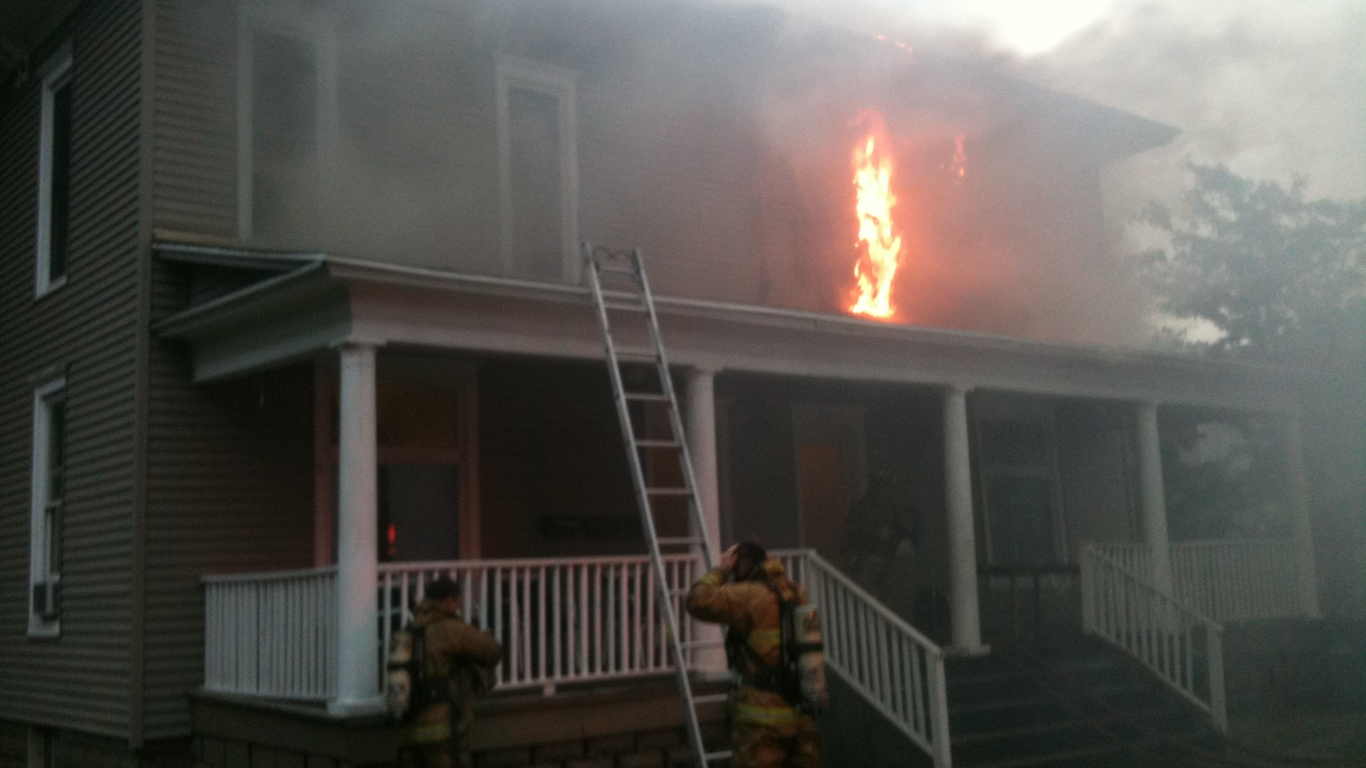
4. Muskegon Heights, Michigan
> Median household income: $20,083
> Median home value: $41,900
> Adults with at least a bachelor’s degree: 6.0%
> Poverty rate: 45.2%
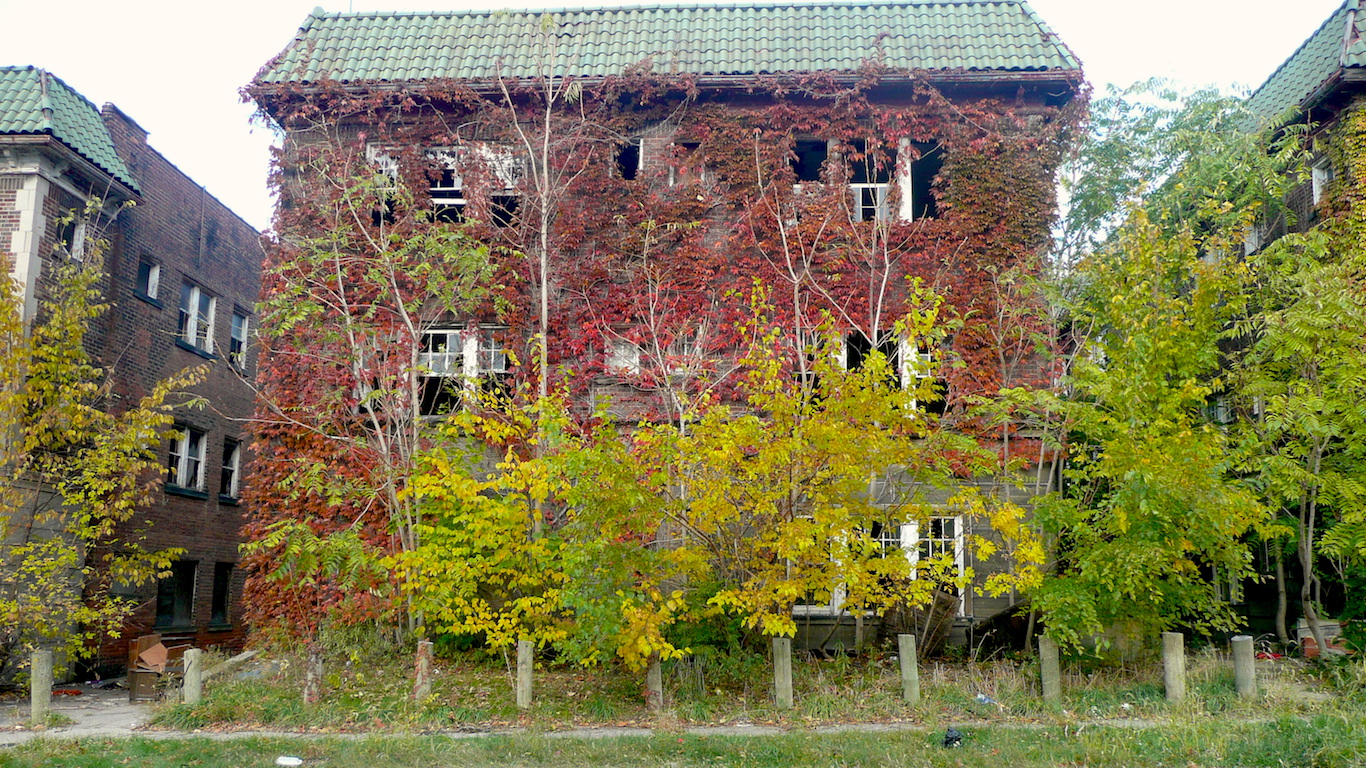
3. East Cleveland, Ohio
> Median household income: $19,592
> Median home value: $60,600
> Adults with at least a bachelor’s degree: 11.0%
> Poverty rate: 42.6%
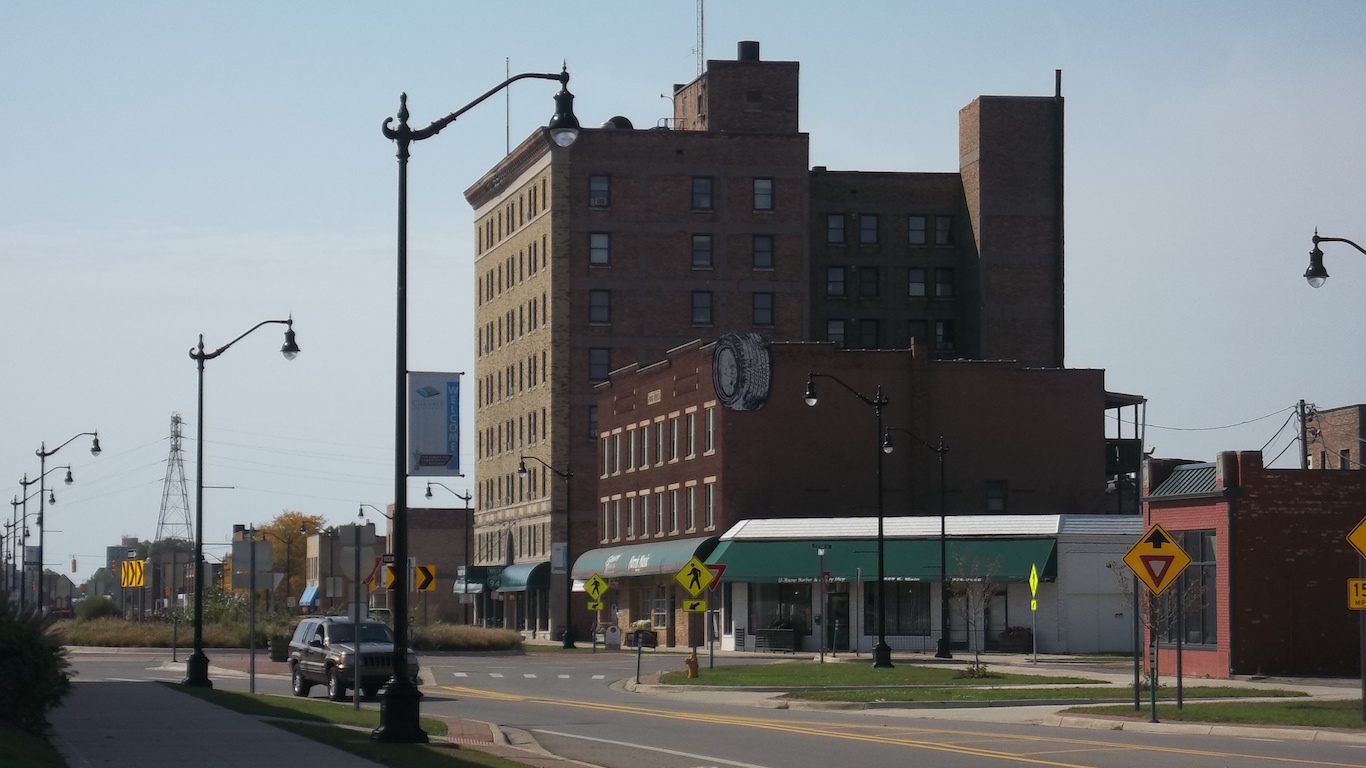
2. Benton Harbor, Michigan
> Median household income: $18,085
> Median home value: $47,800
> Adults with at least a bachelor’s degree: 5.1%
> Poverty rate: 50.3%
[in-text-ad-2]
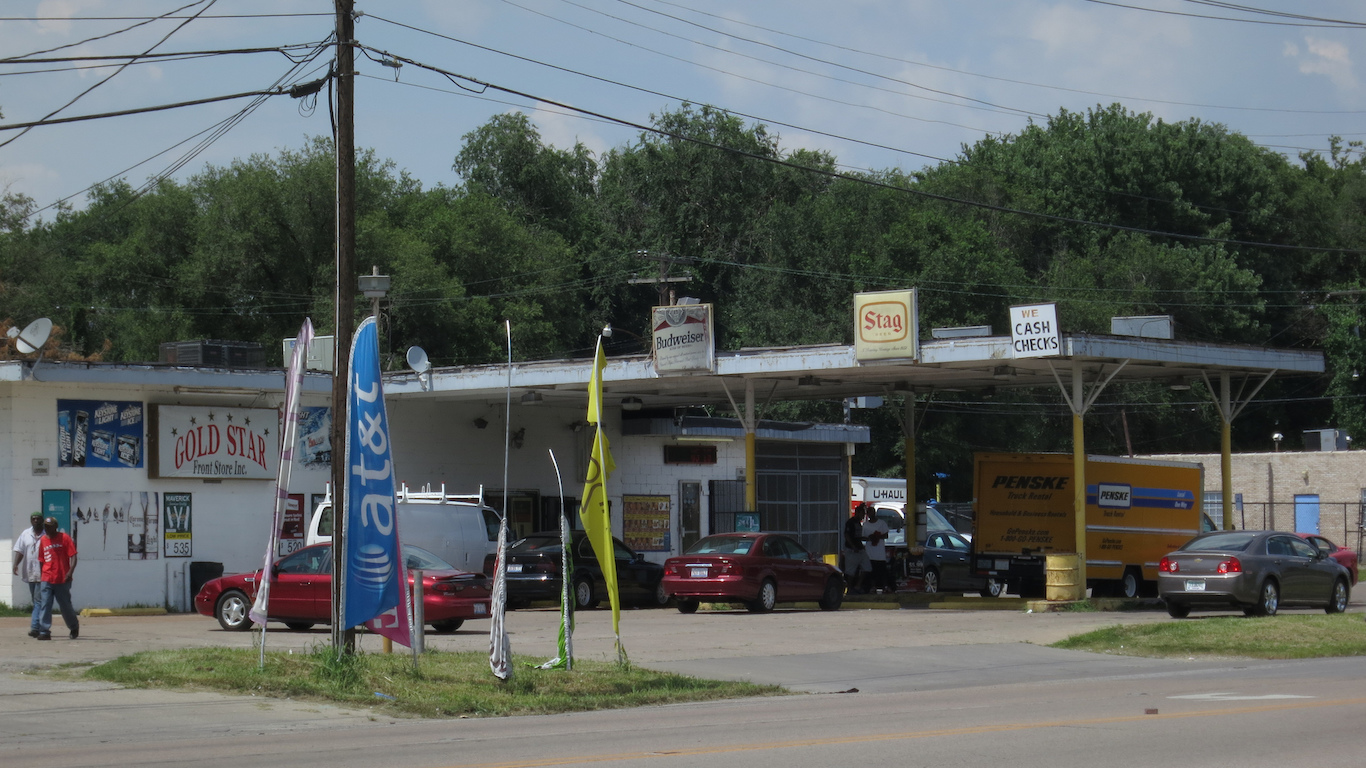
1. Centreville, Illinois
> Median household income: $16,553
> Median home value: $49,600
> Adults with at least a bachelor’s degree: 10.9%
> Poverty rate: 47.8%
Is Your Money Earning the Best Possible Rate? (Sponsor)
Let’s face it: If your money is just sitting in a checking account, you’re losing value every single day. With most checking accounts offering little to no interest, the cash you worked so hard to save is gradually being eroded by inflation.
However, by moving that money into a high-yield savings account, you can put your cash to work, growing steadily with little to no effort on your part. In just a few clicks, you can set up a high-yield savings account and start earning interest immediately.
There are plenty of reputable banks and online platforms that offer competitive rates, and many of them come with zero fees and no minimum balance requirements. Click here to see if you’re earning the best possible rate on your money!
Thank you for reading! Have some feedback for us?
Contact the 24/7 Wall St. editorial team.
 24/7 Wall St.
24/7 Wall St.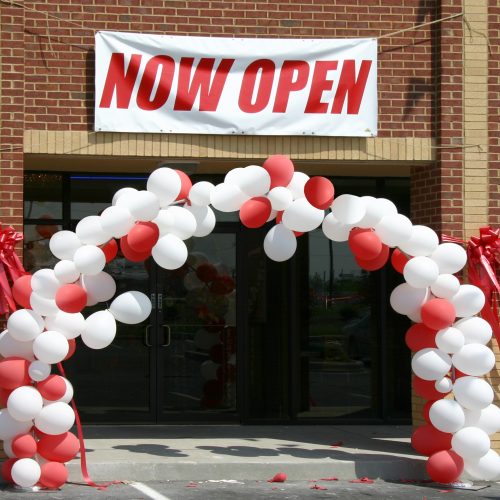 24/7 Wall St.
24/7 Wall St. 24/7 Wall St.
24/7 Wall St.

